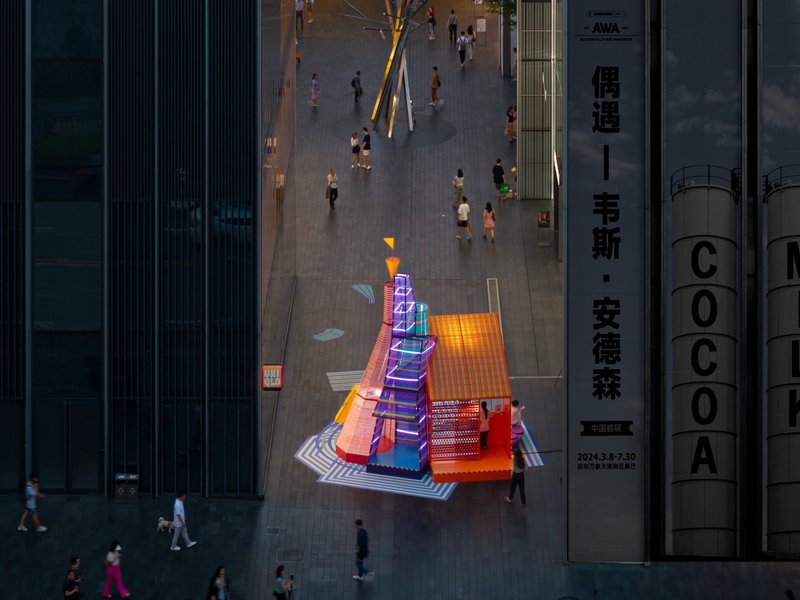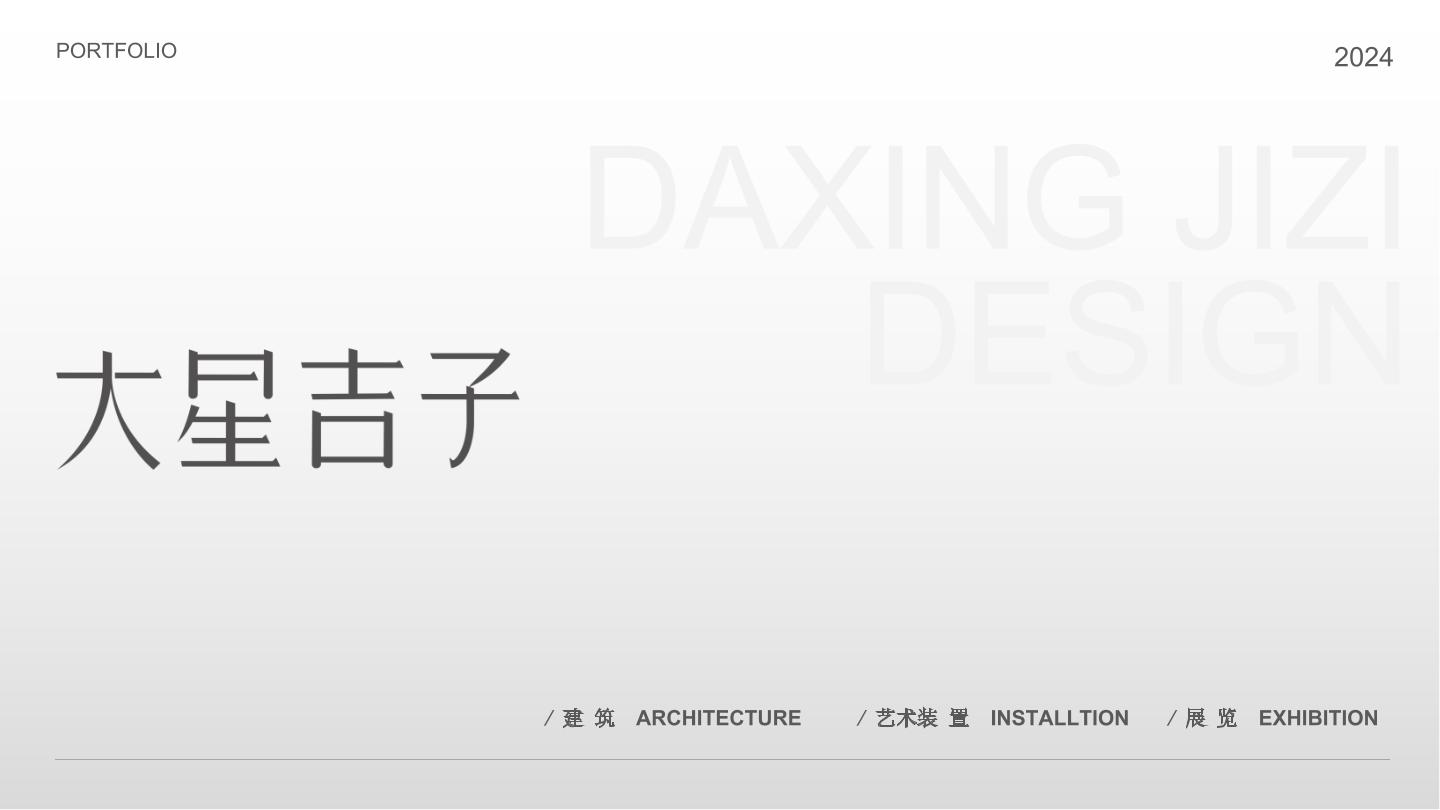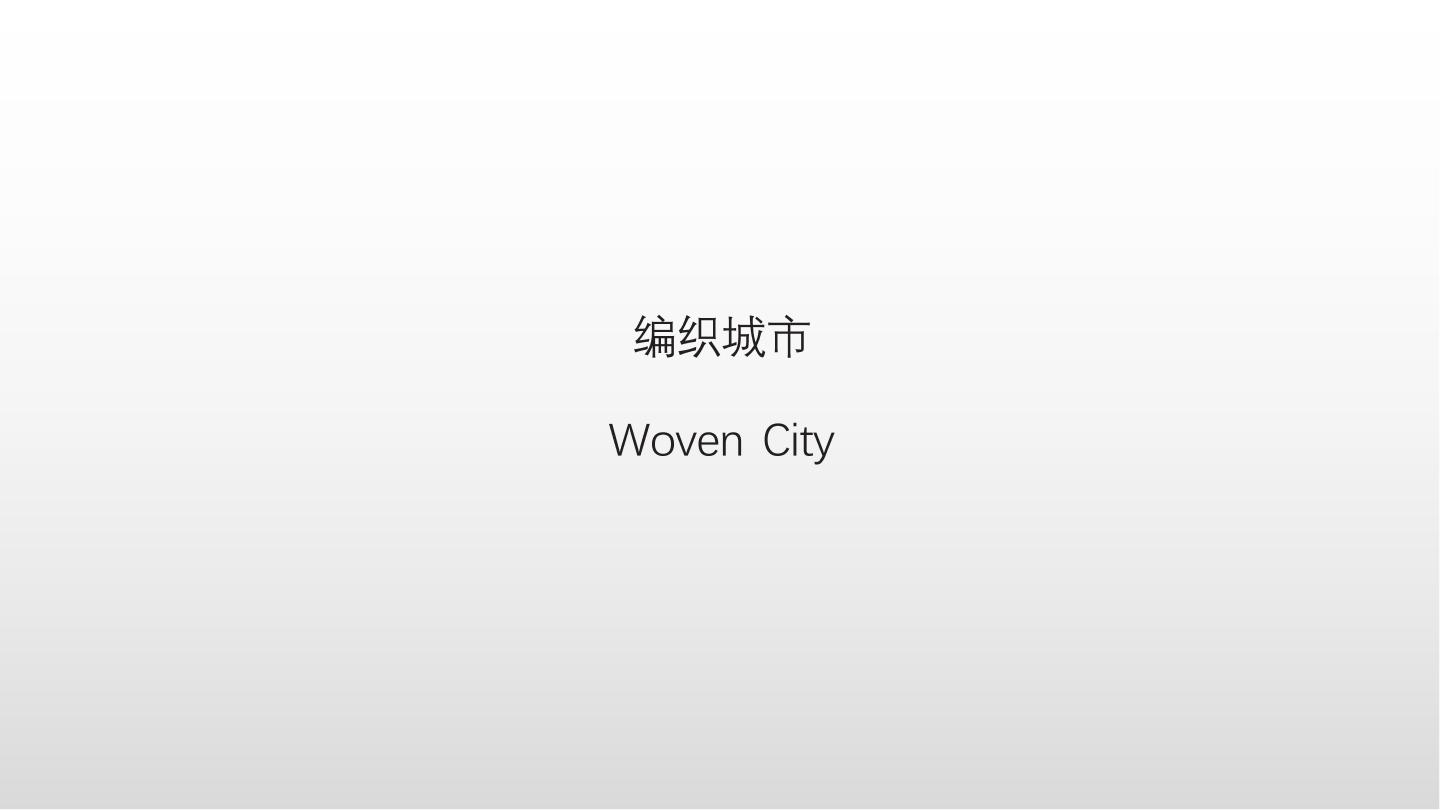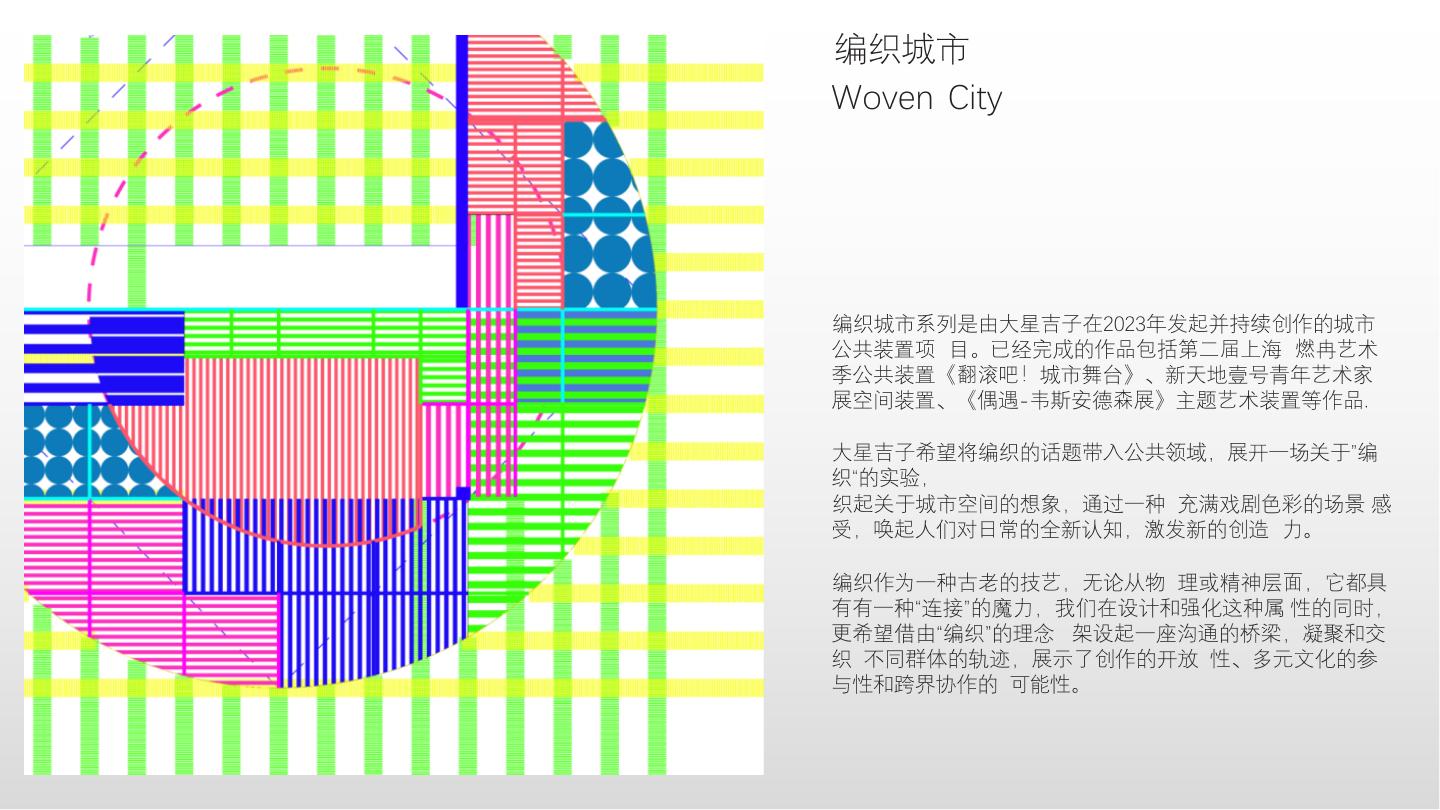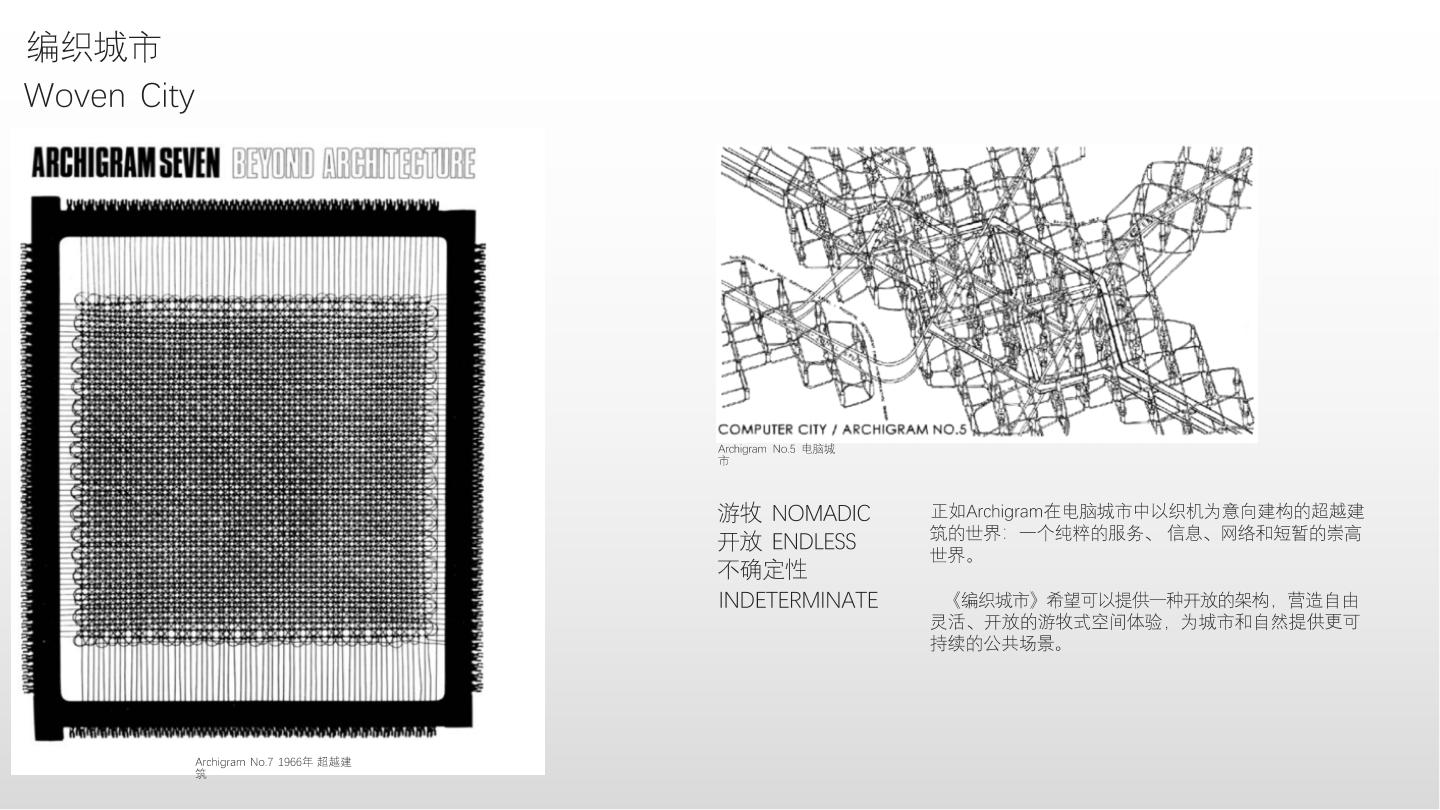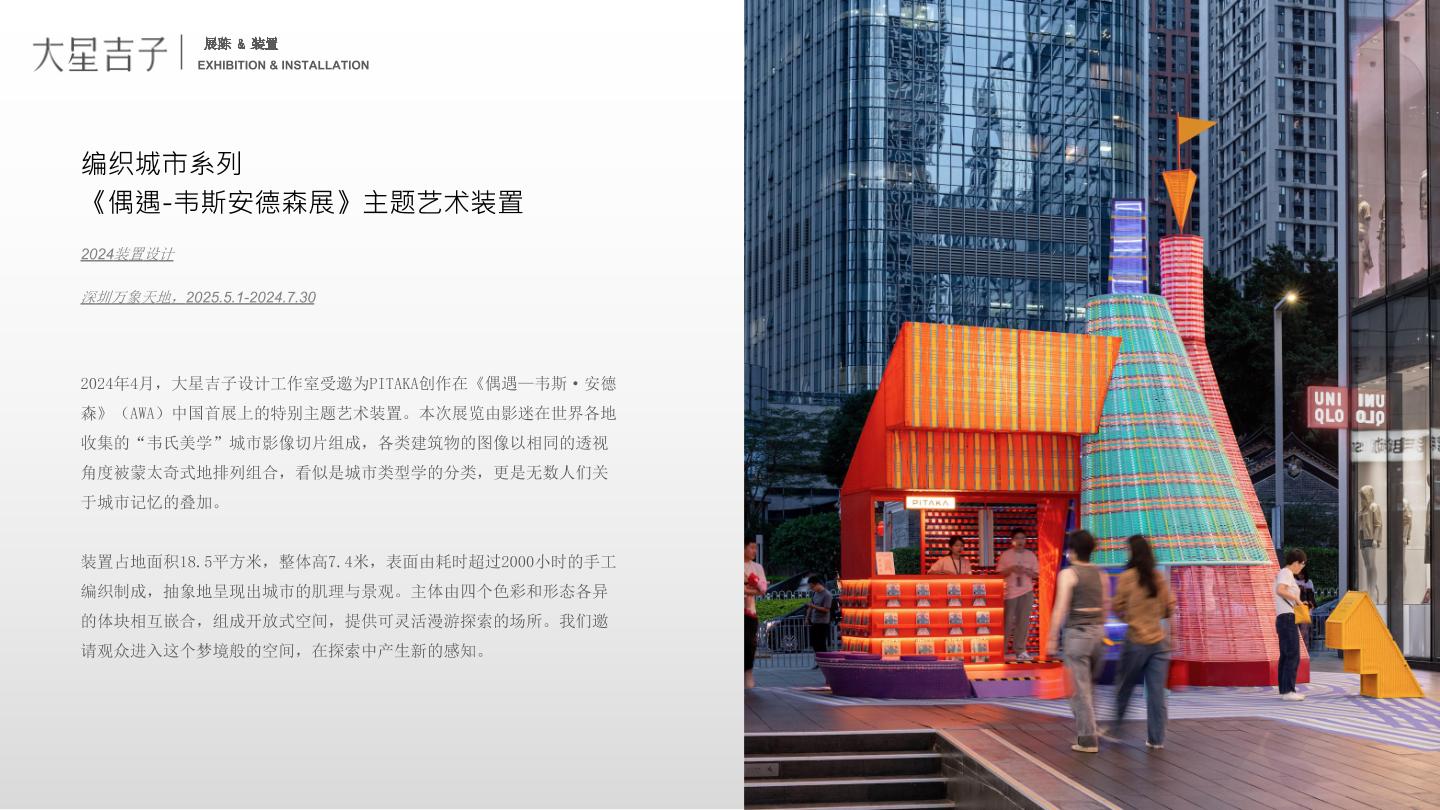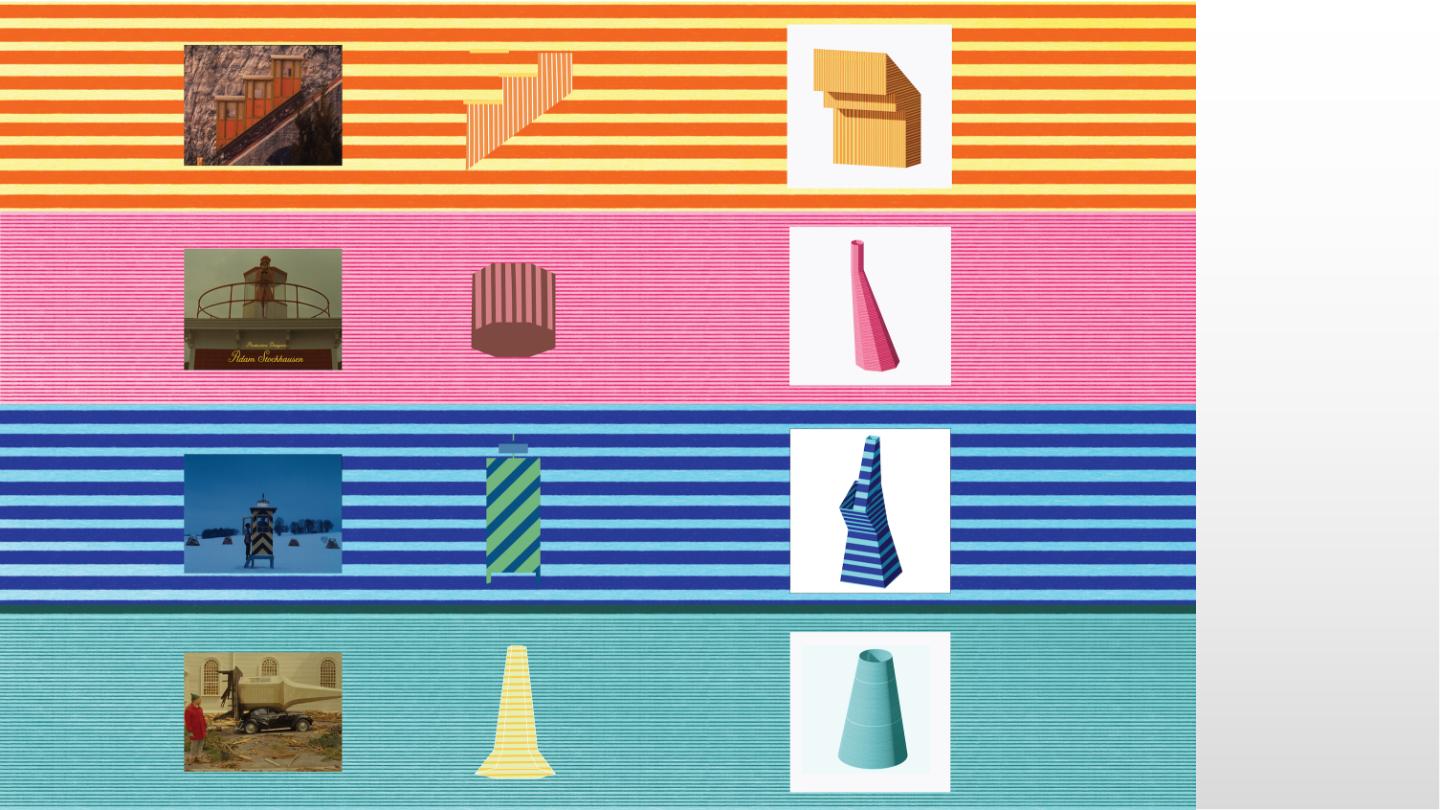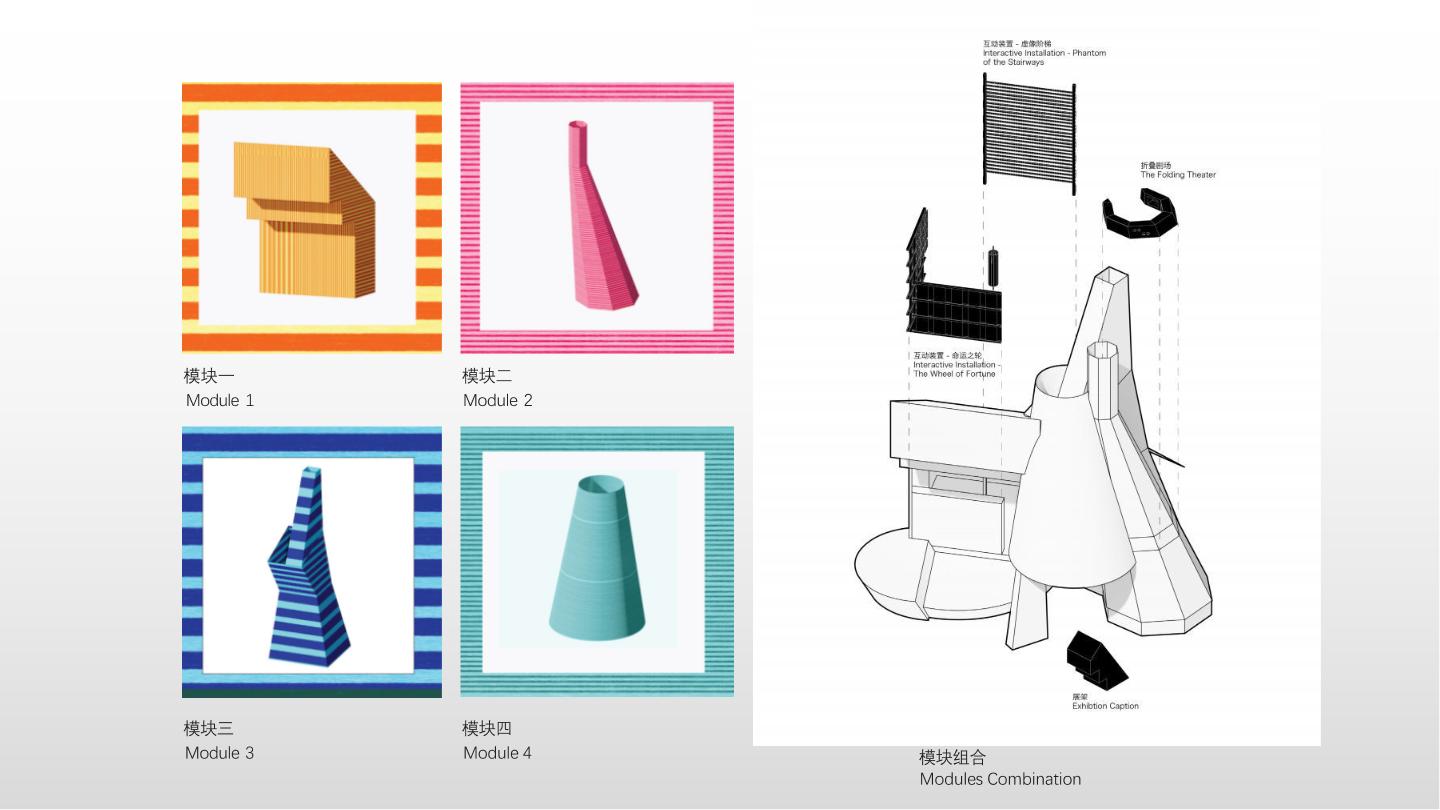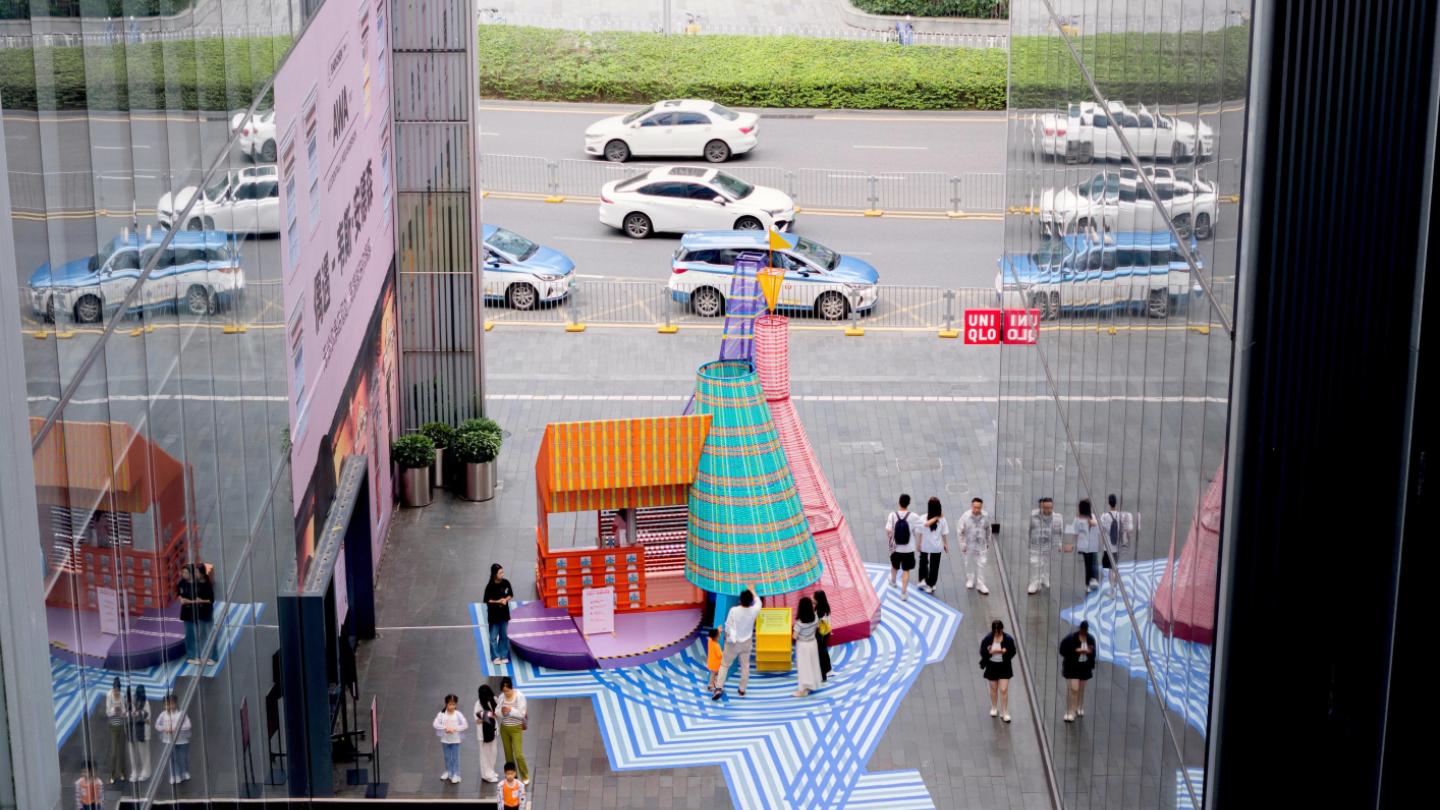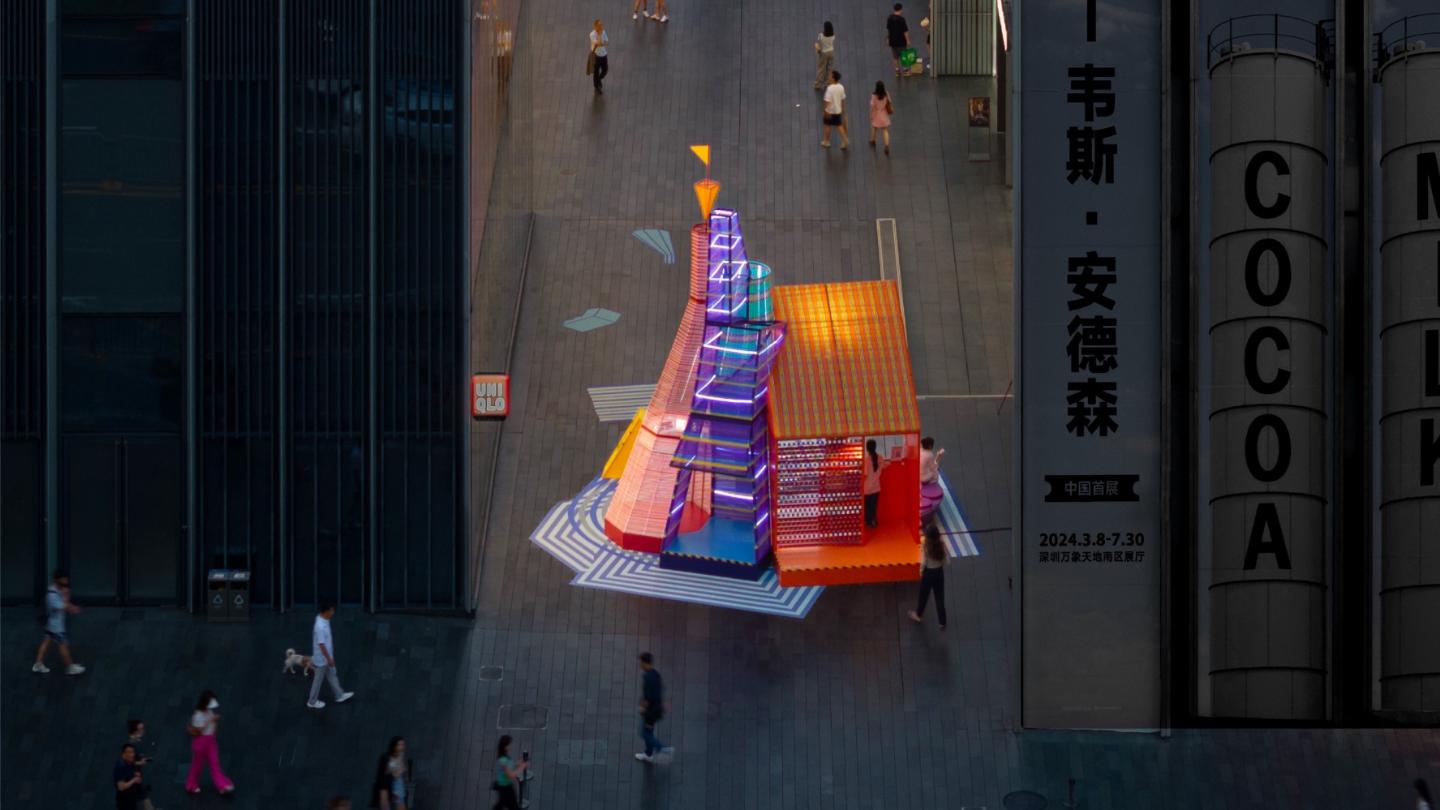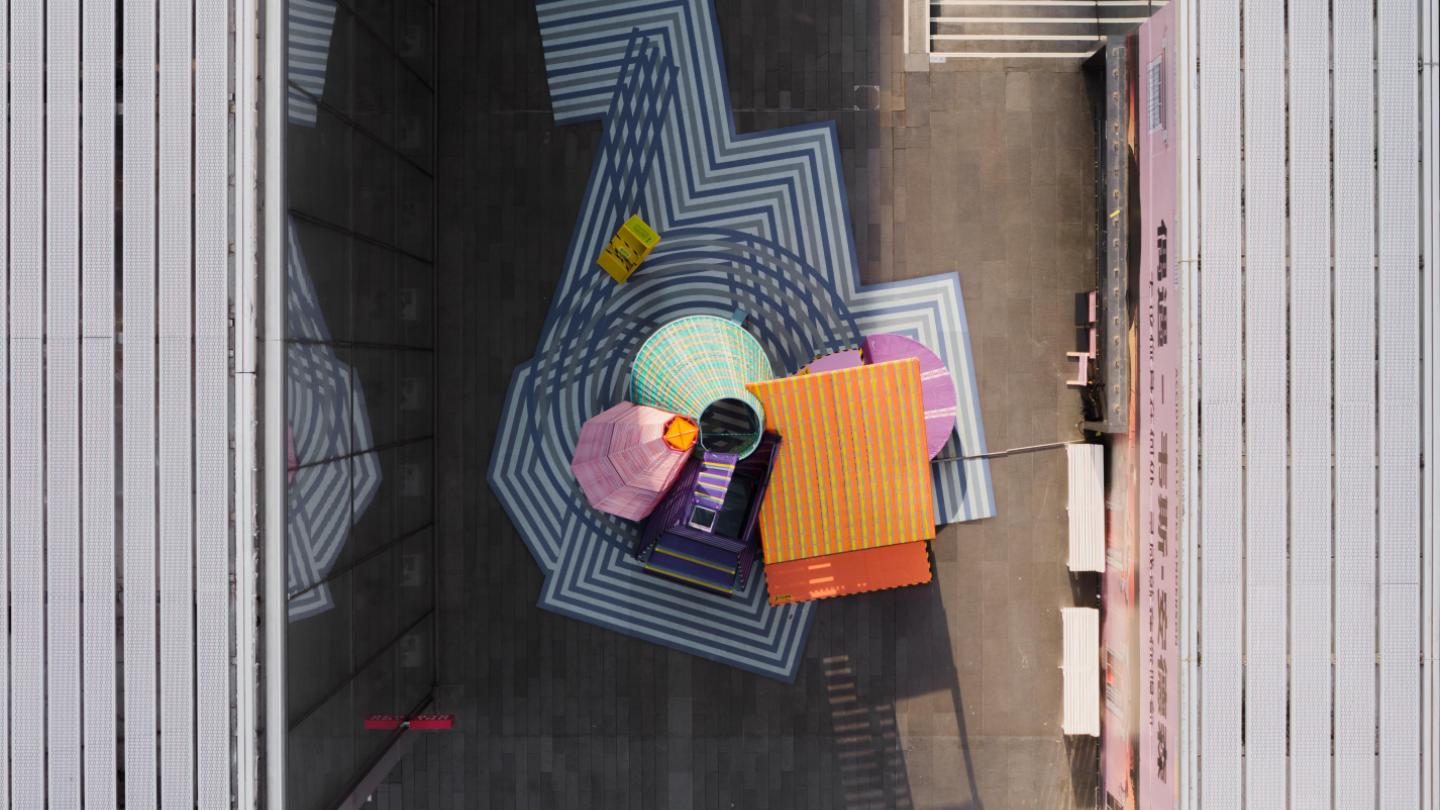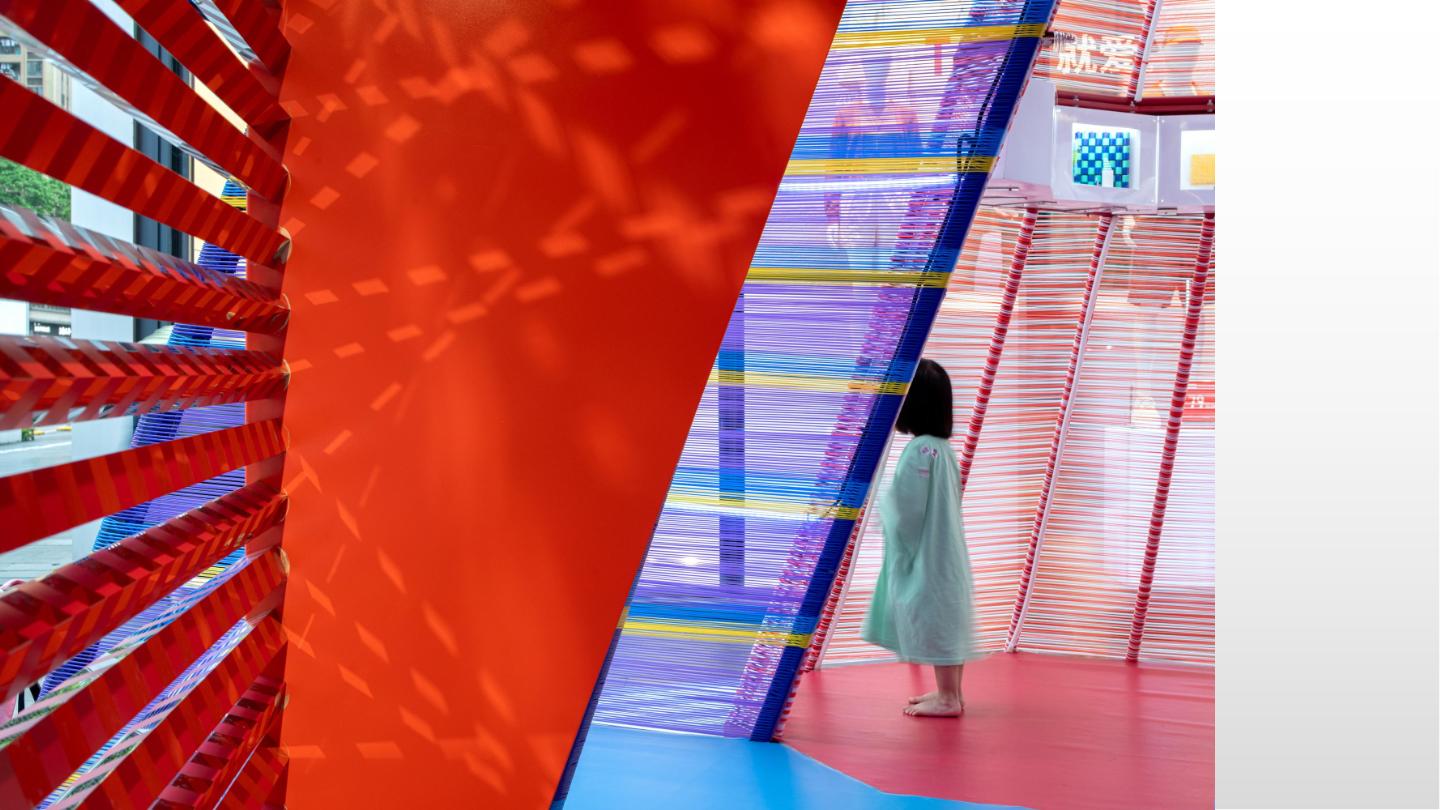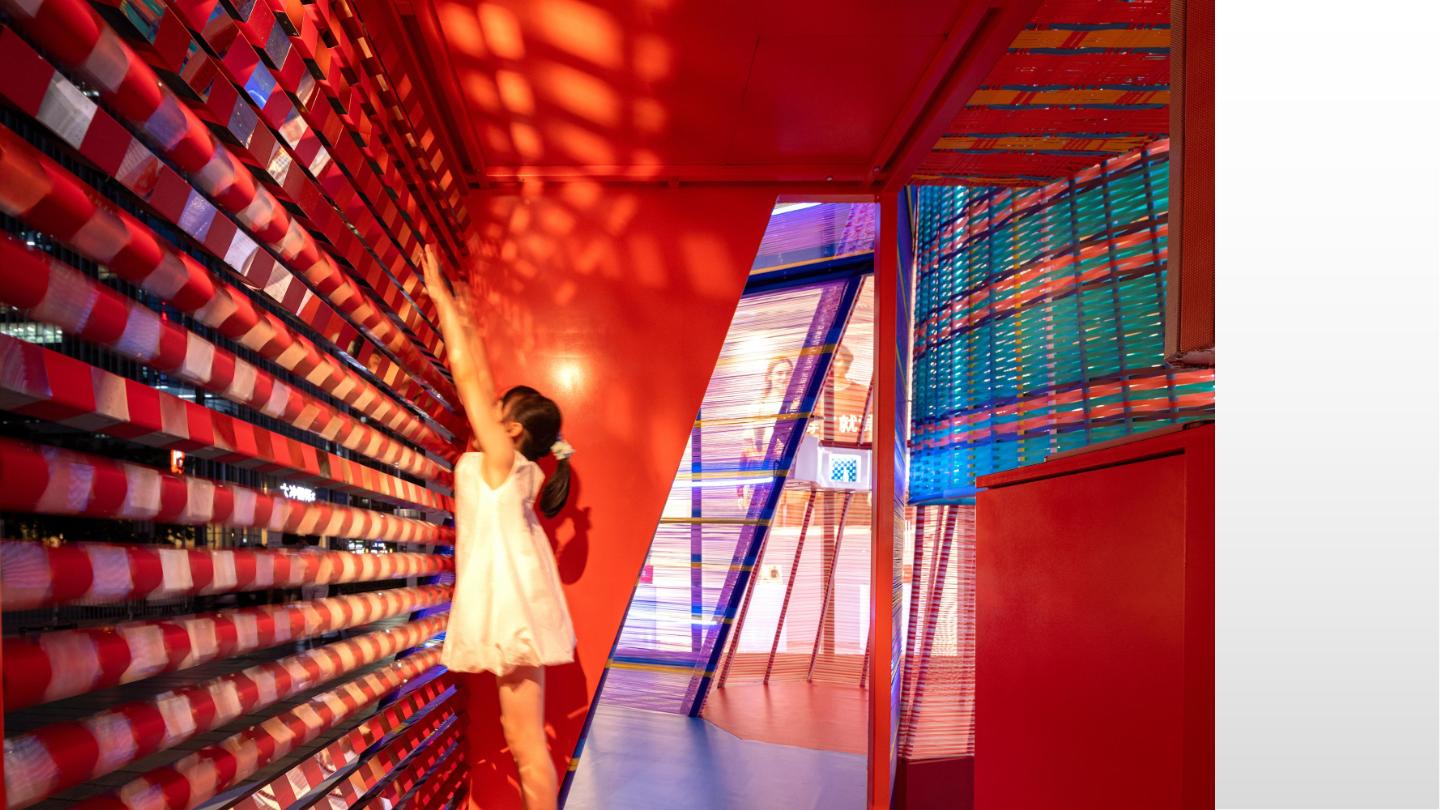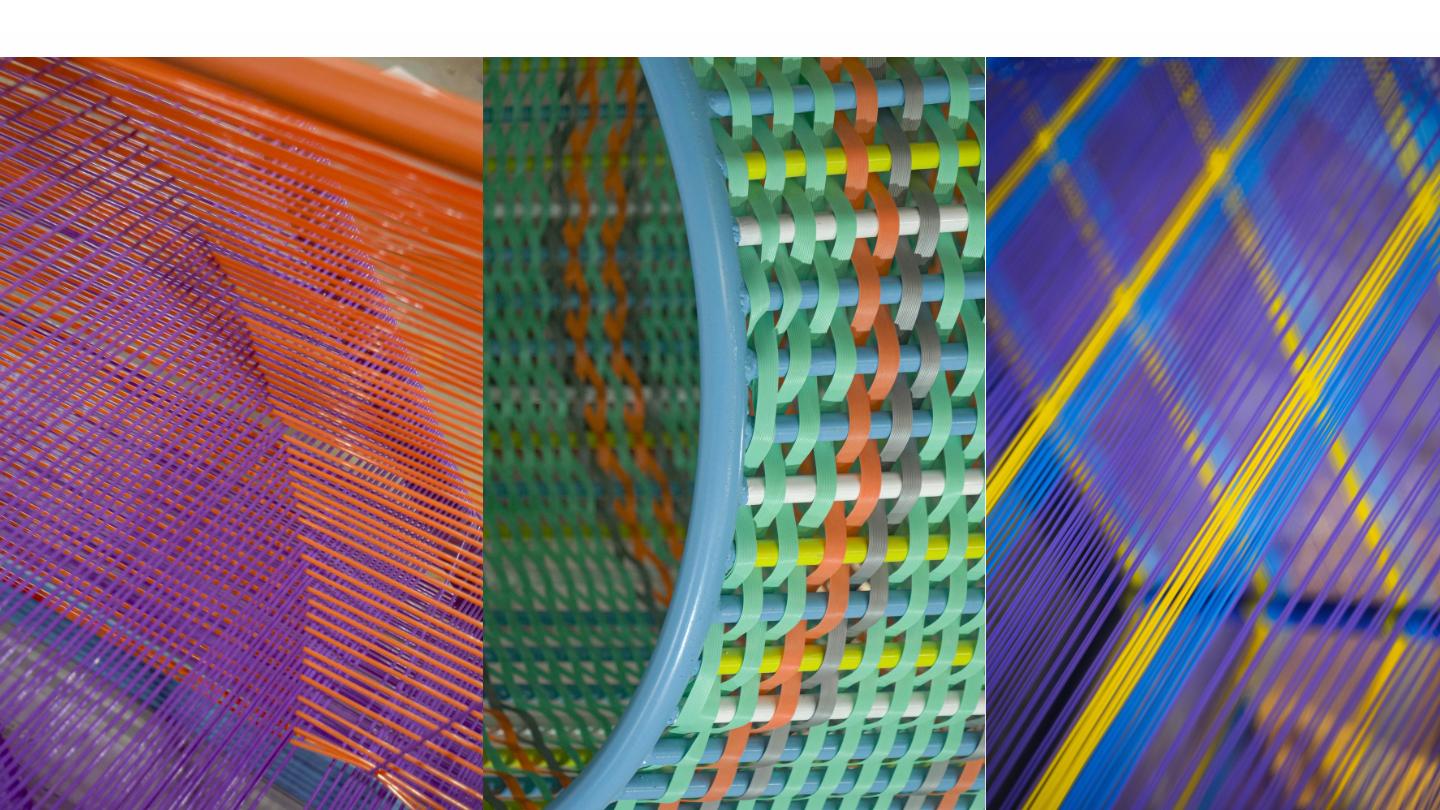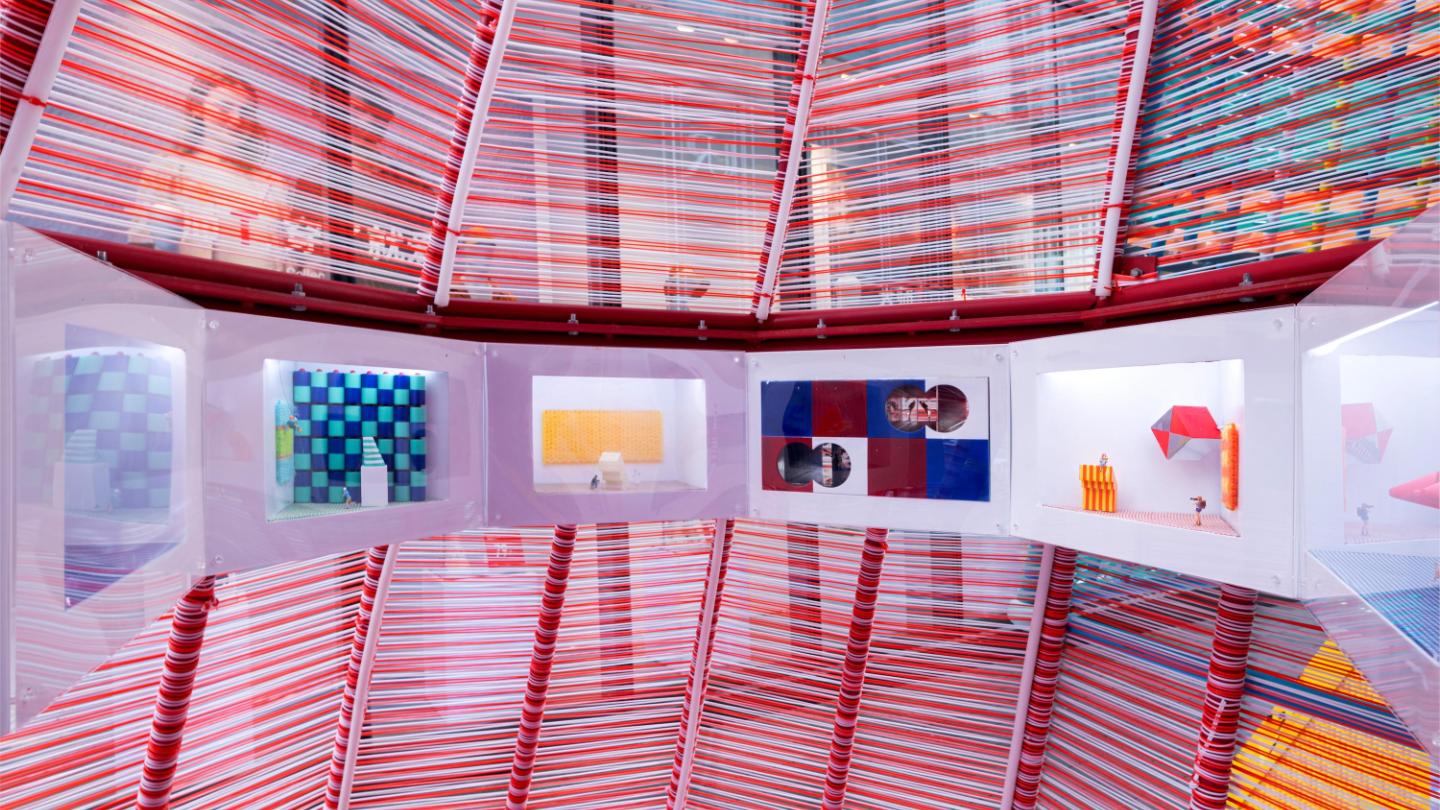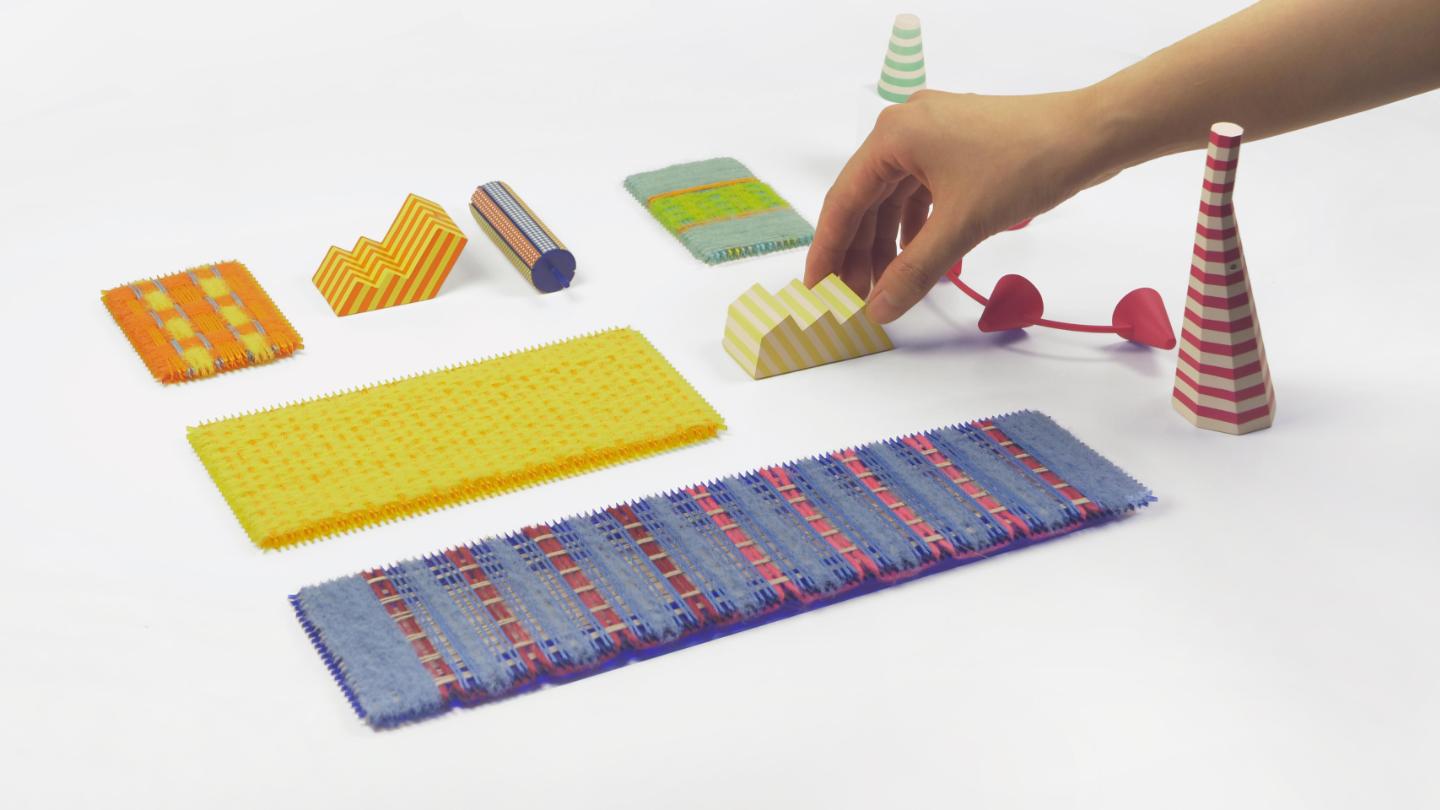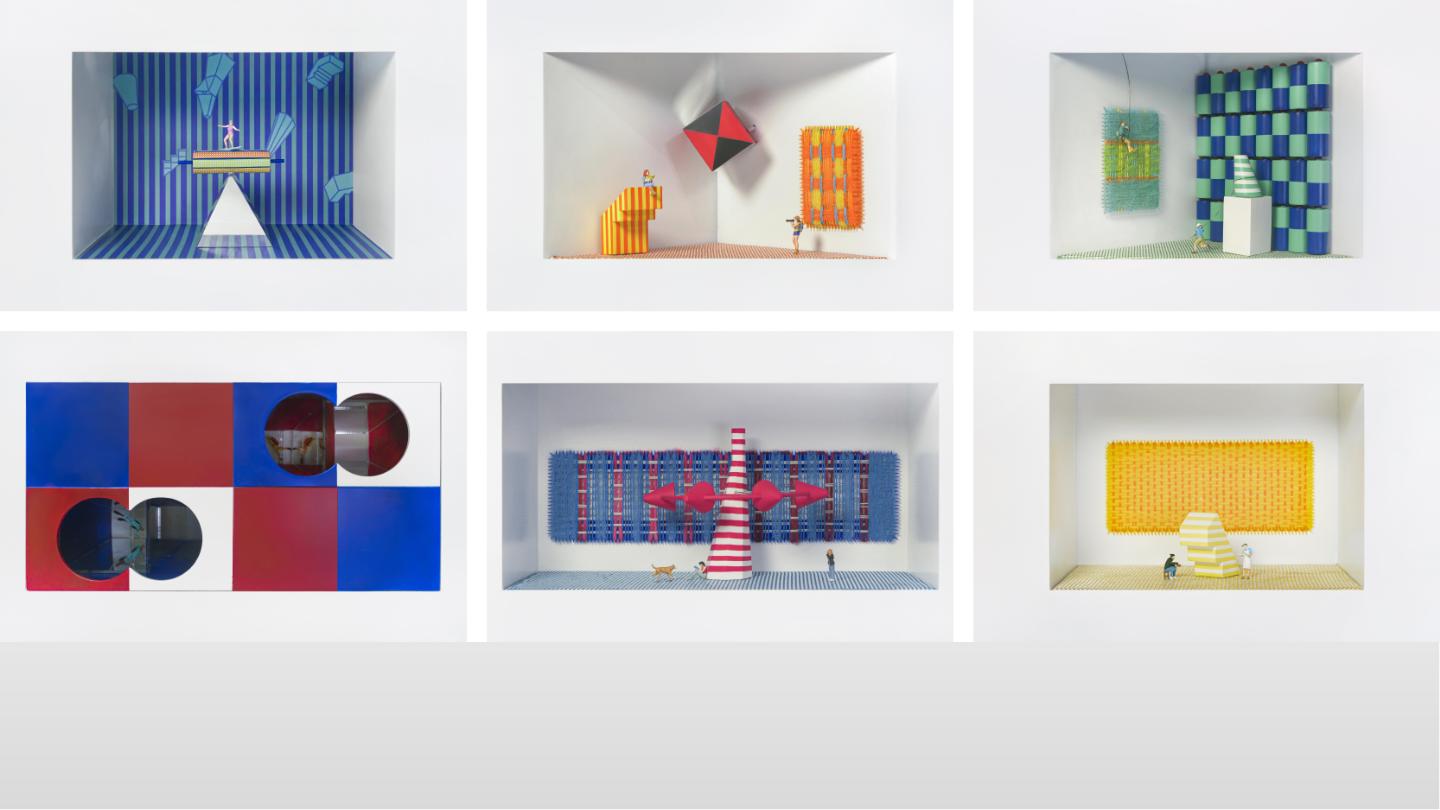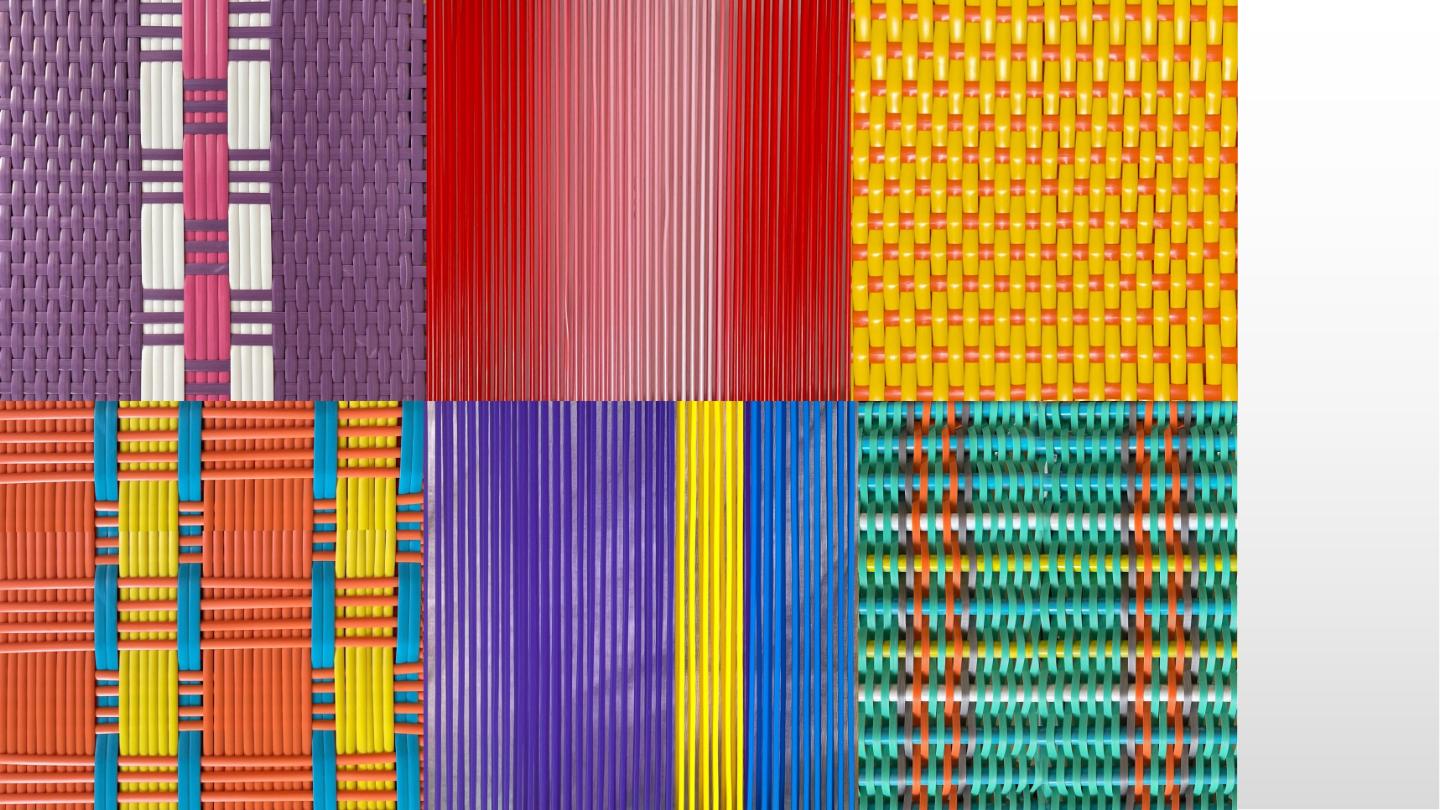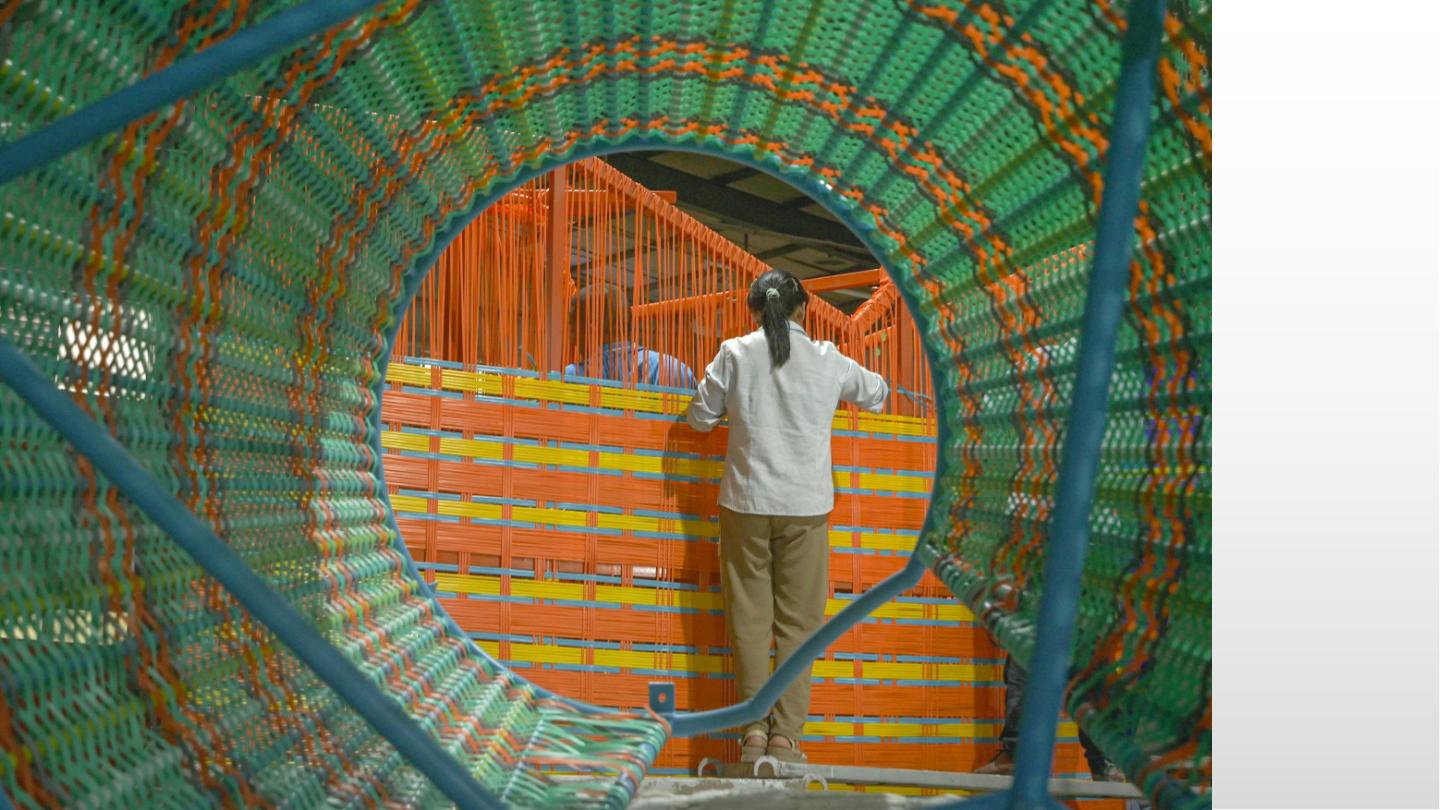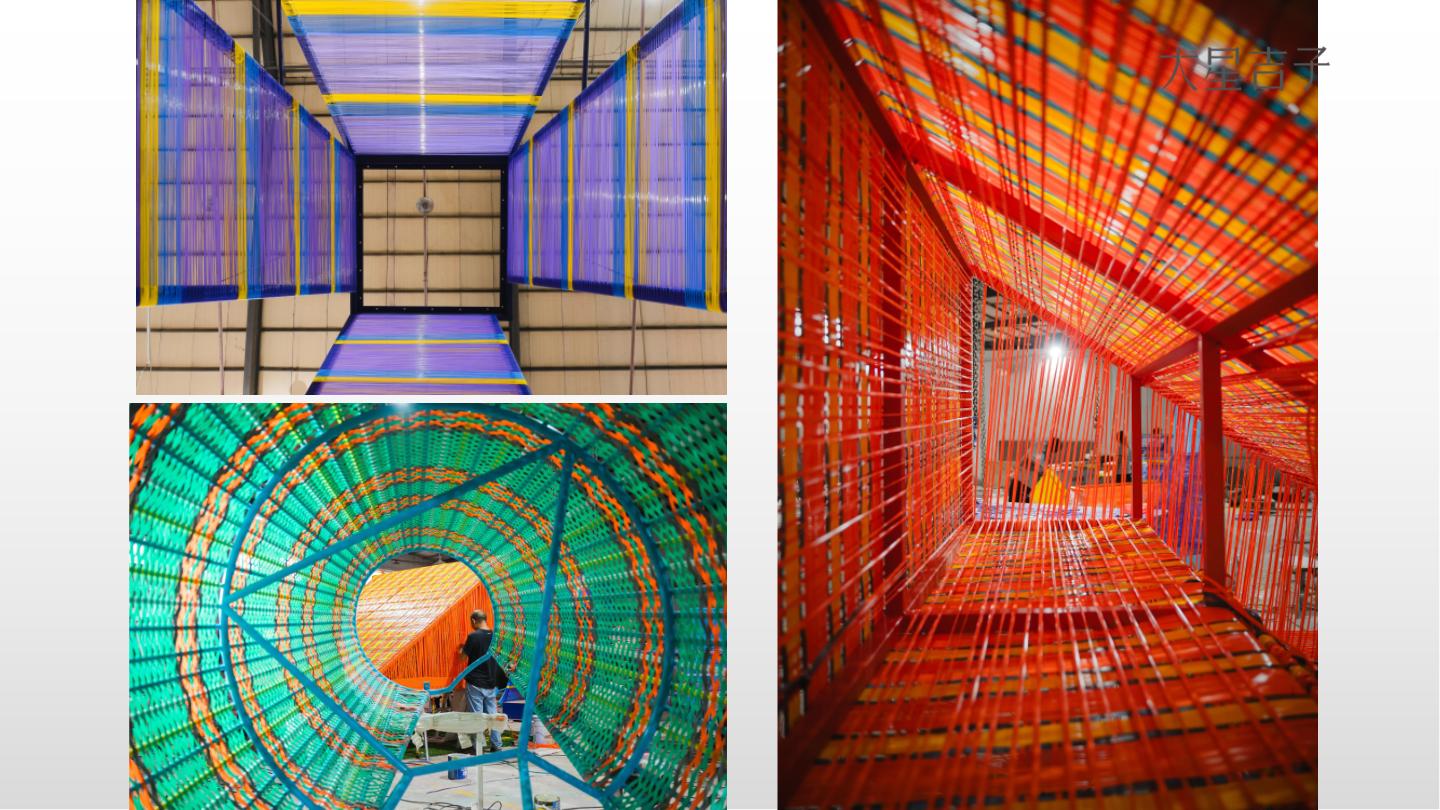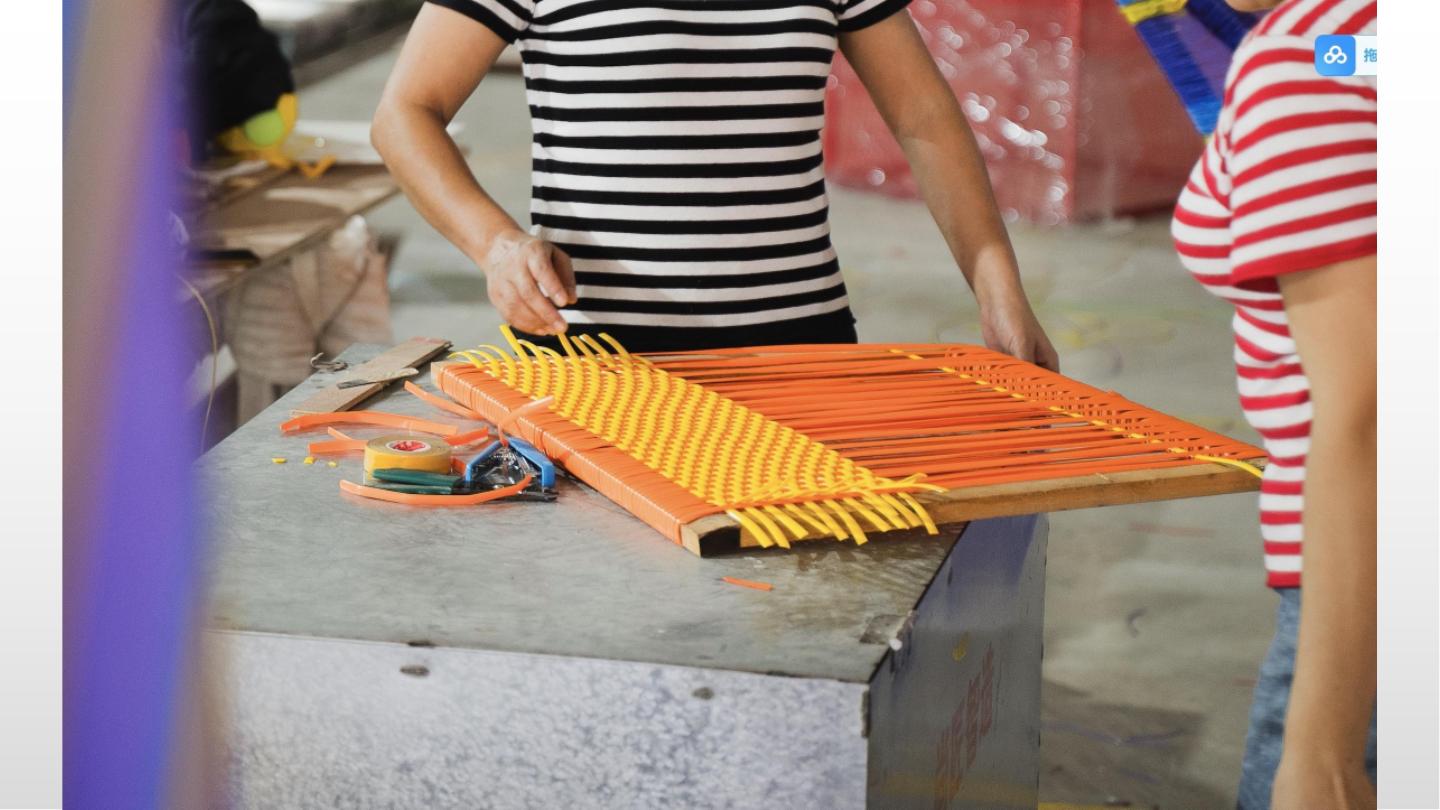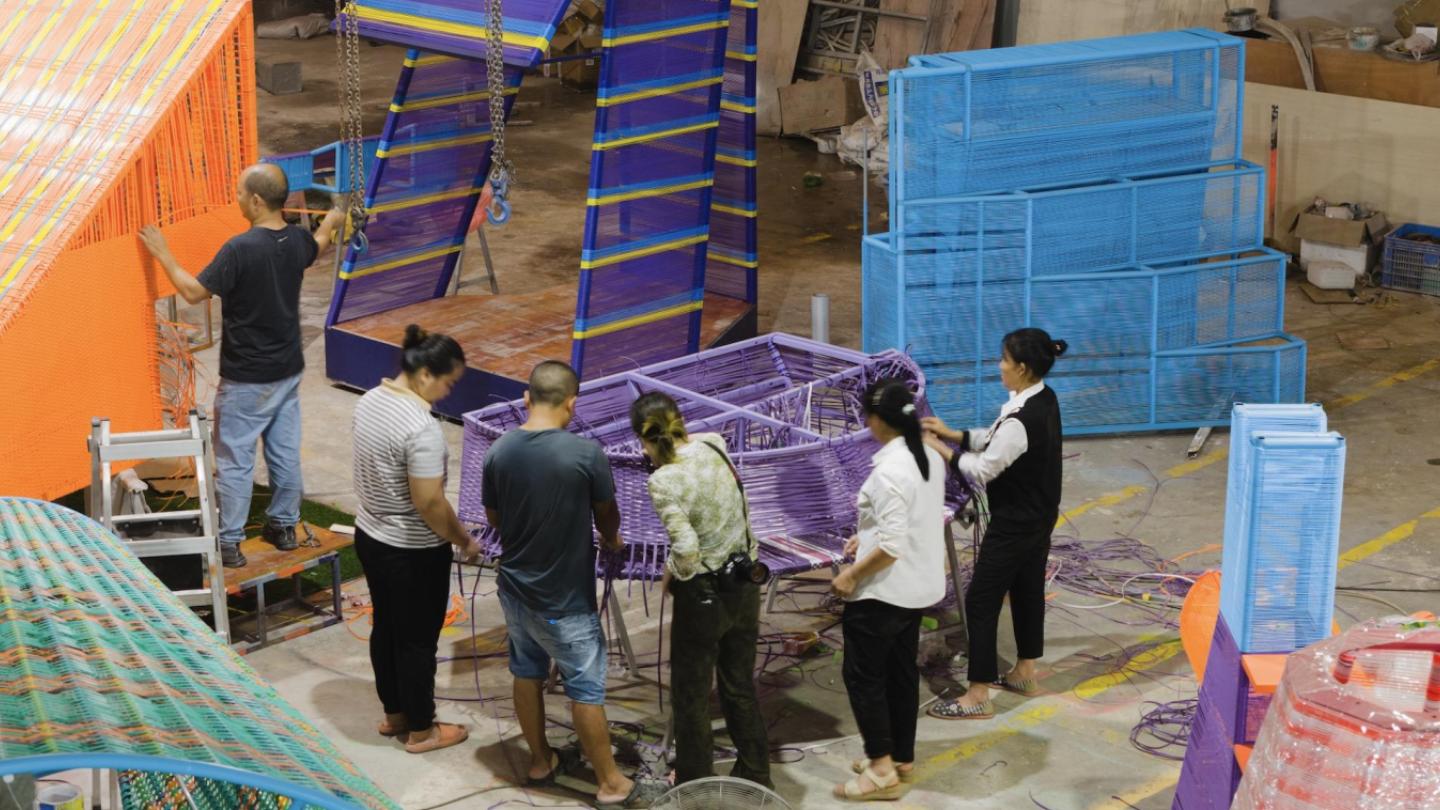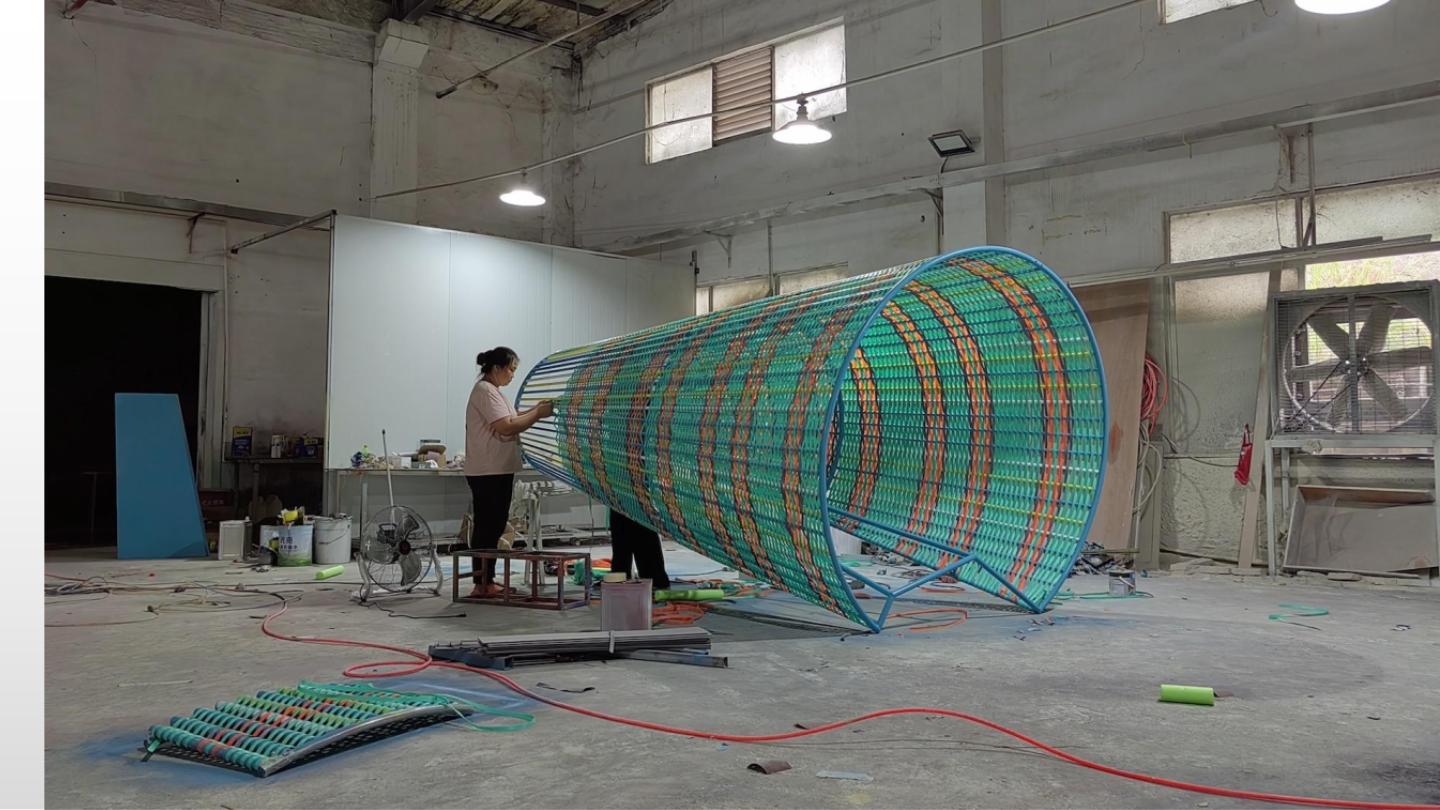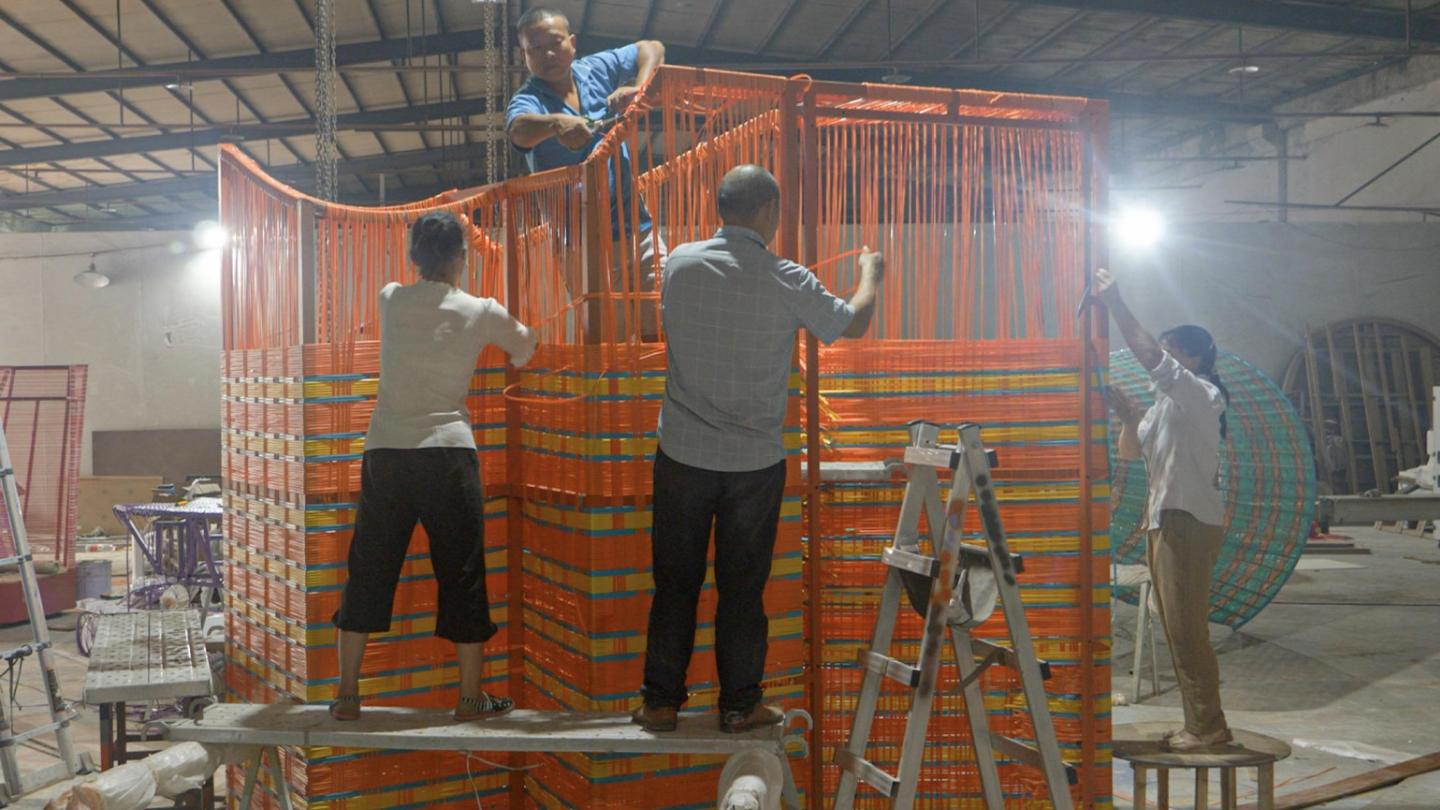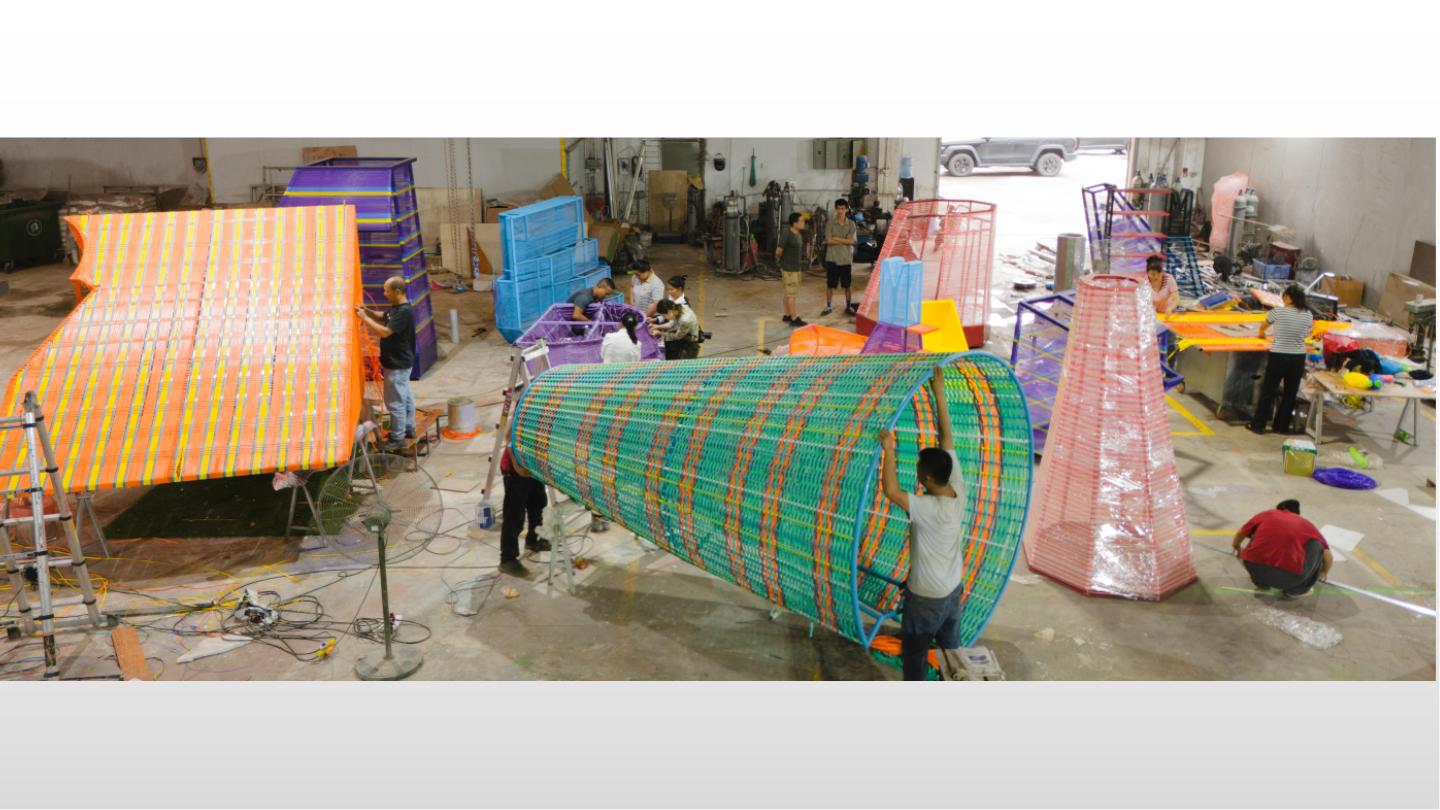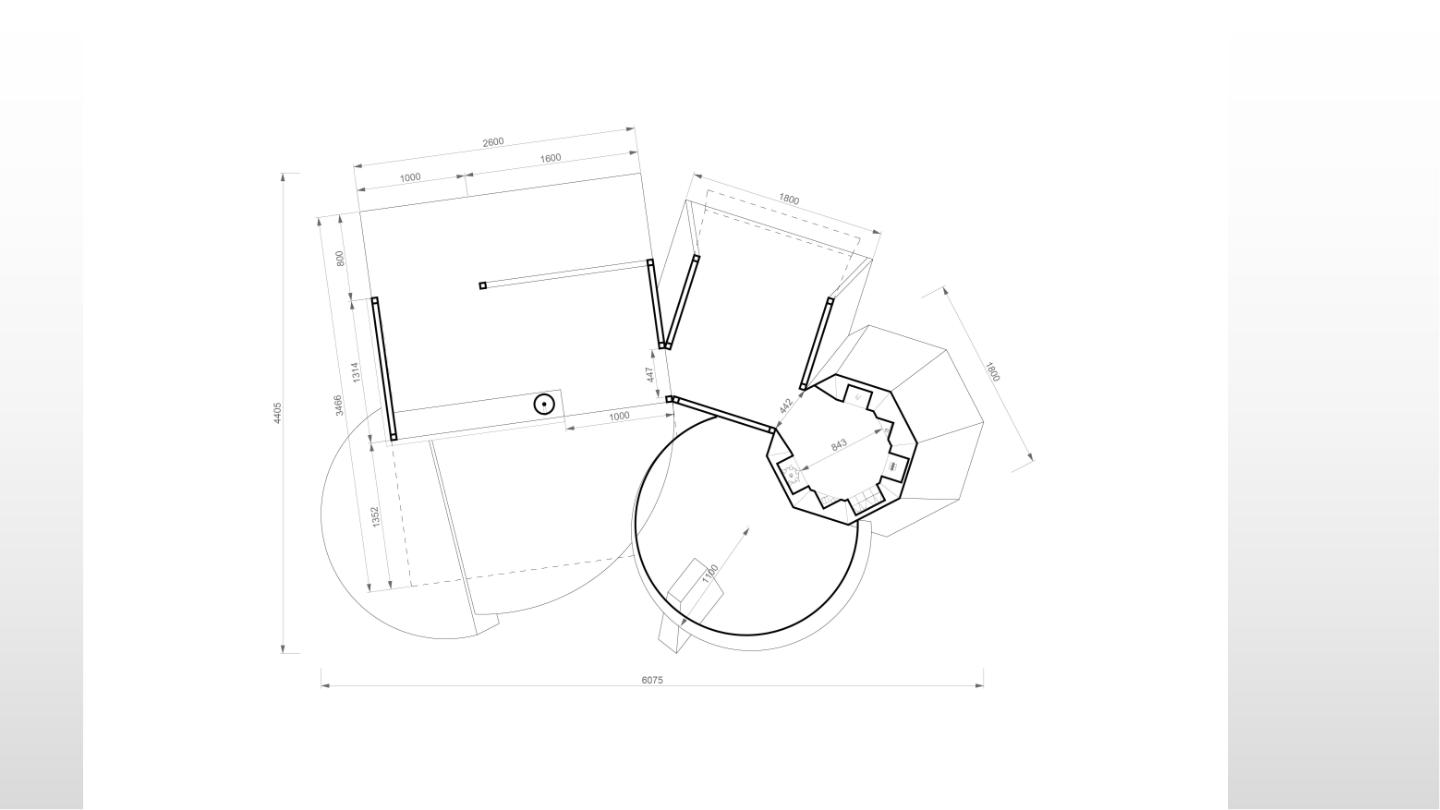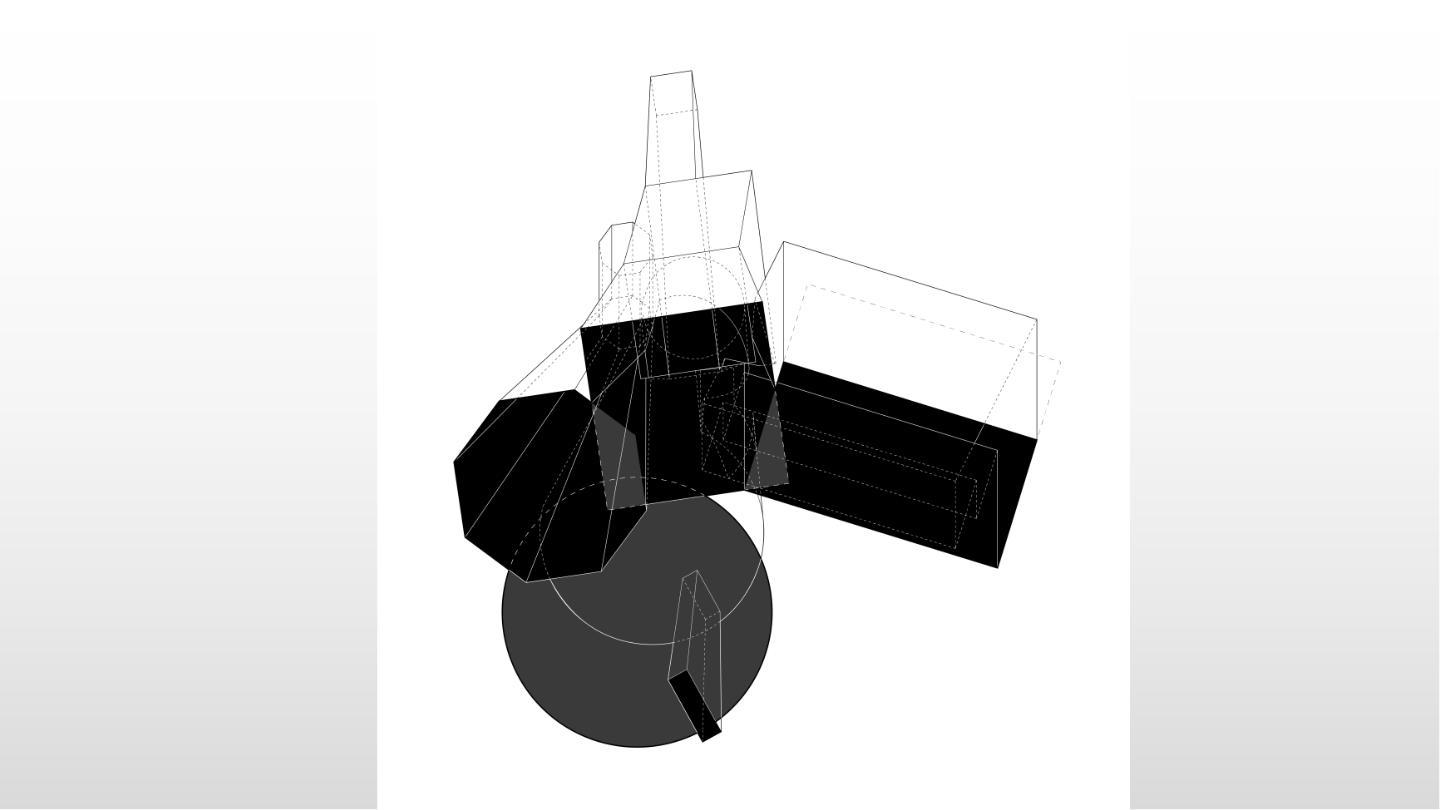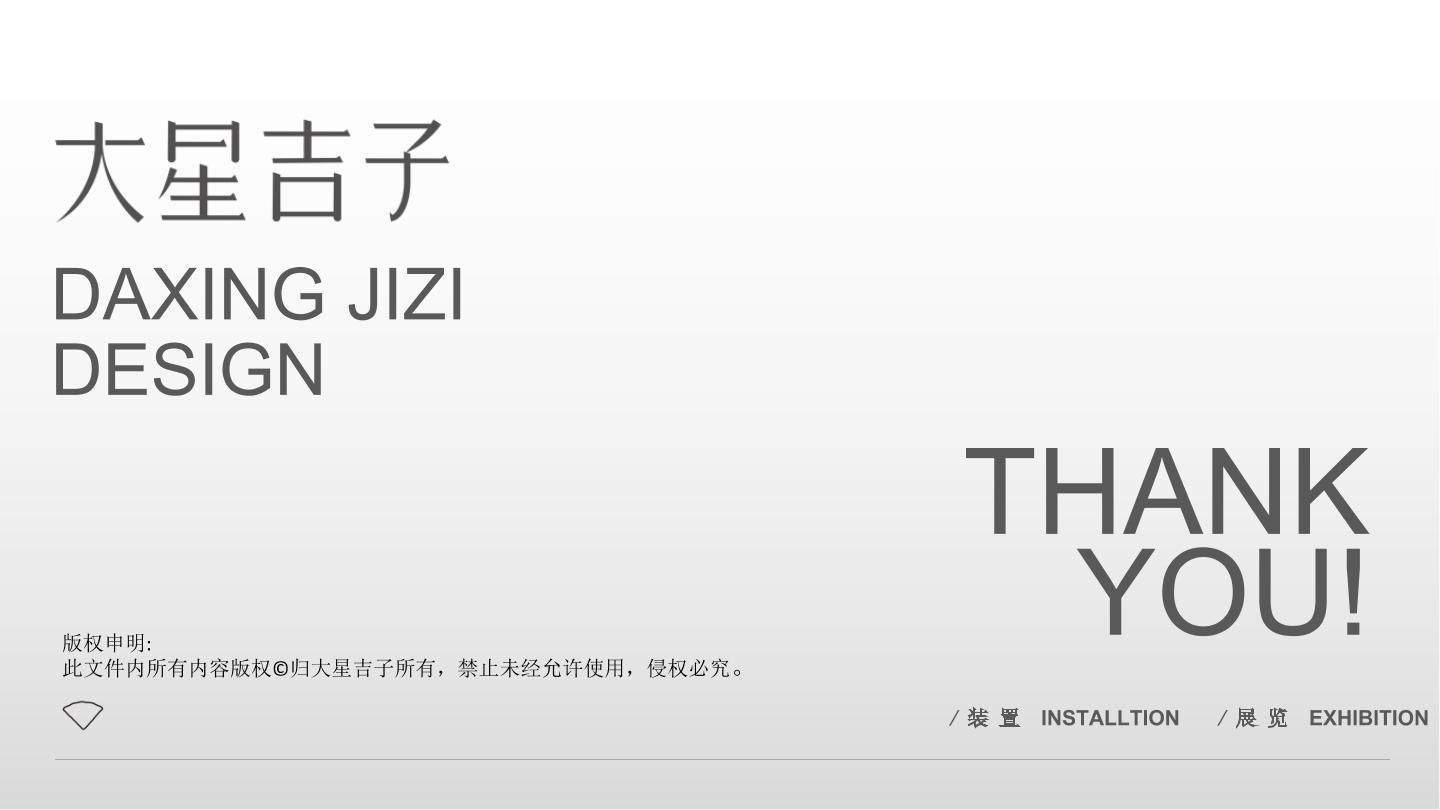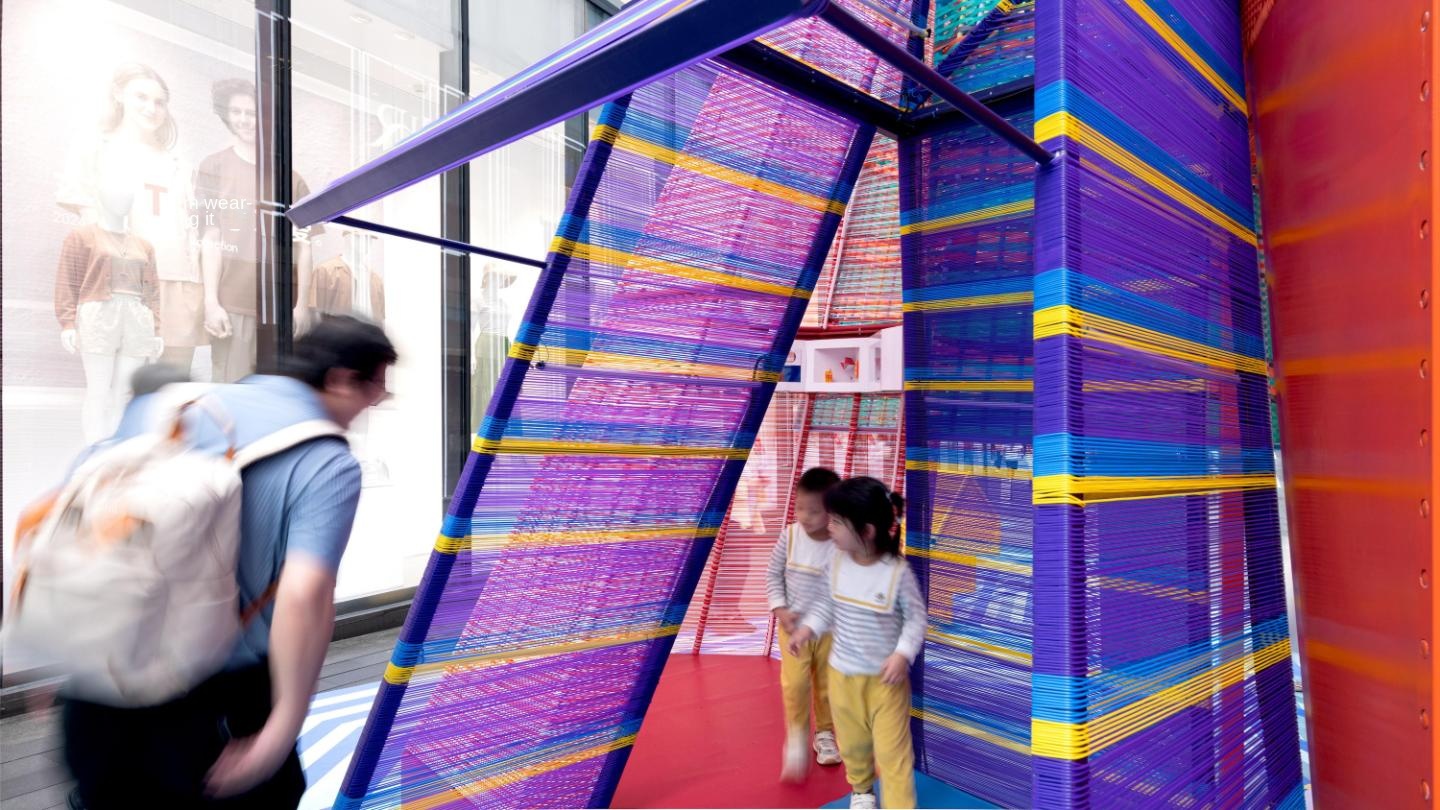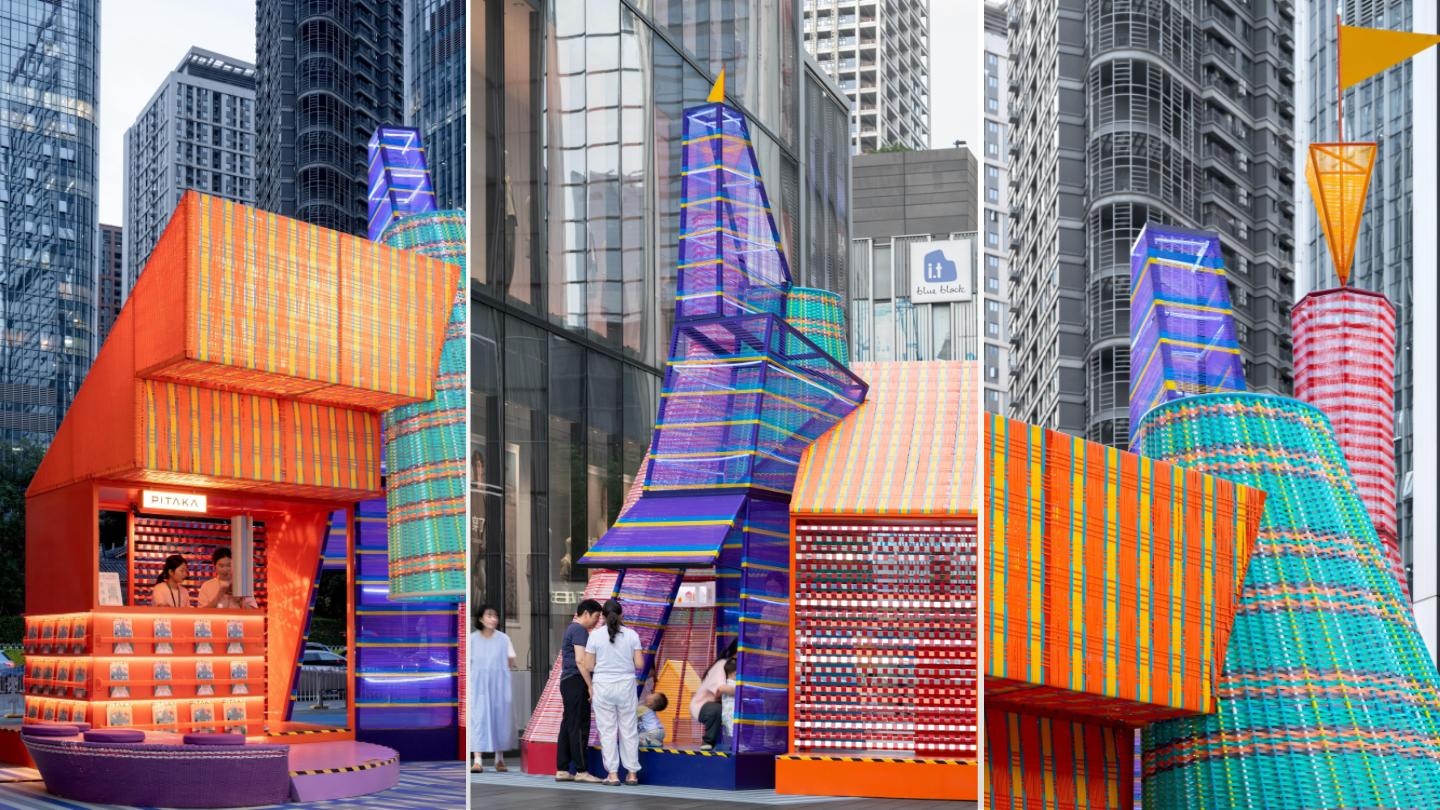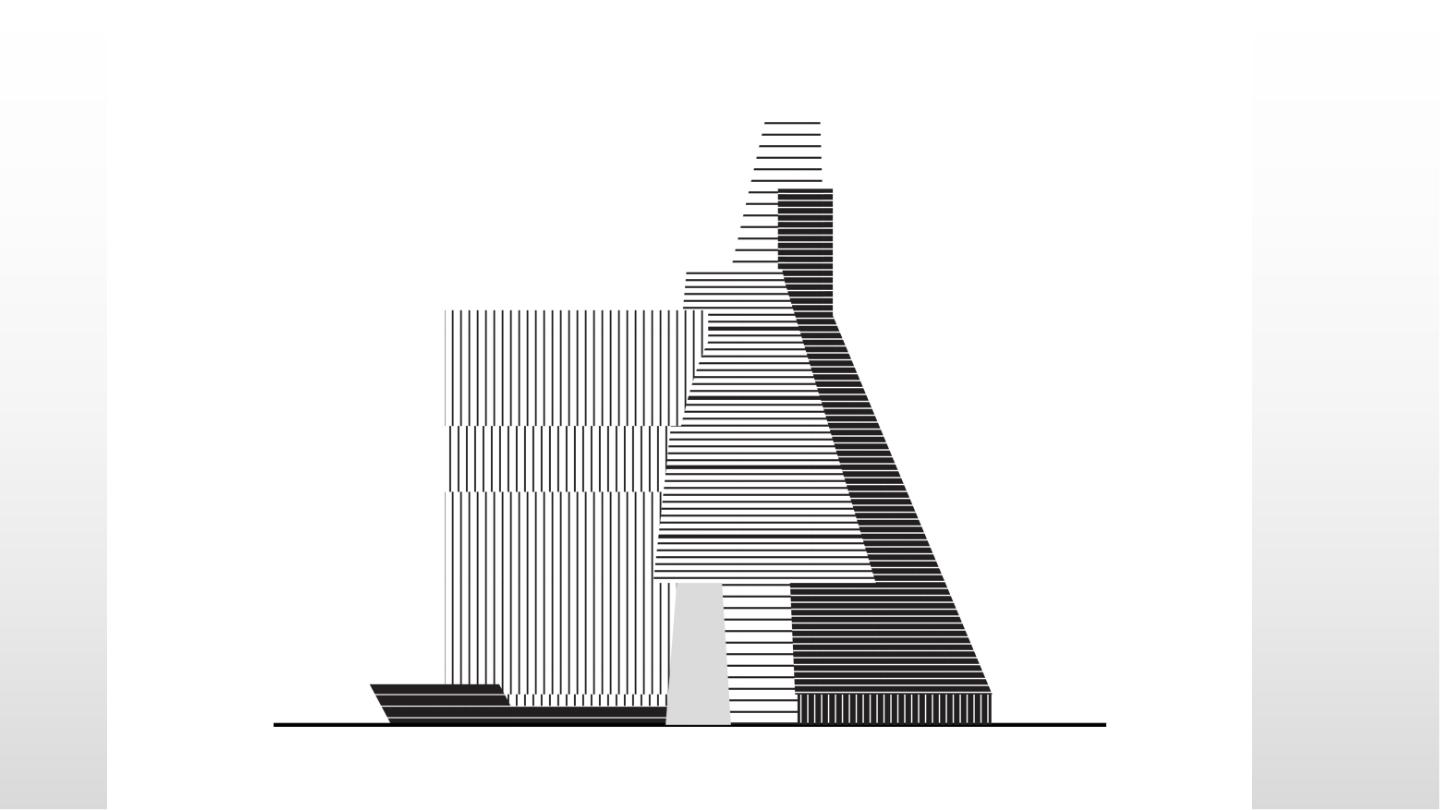01 "Weaving City-Weaving Dream House" Public Art Device©Big Star Jizi Photography: Hu Kangyu
07 different weaving texture performance©Big Star Jizi Photography: Hu Kangyu
20 installations open to urban space from all angles©Big Star Jizi Photography: Hu Kangyu
21 Blurred inside and outside braided interface©Big Star Jizi Photography: Hu Kangyu
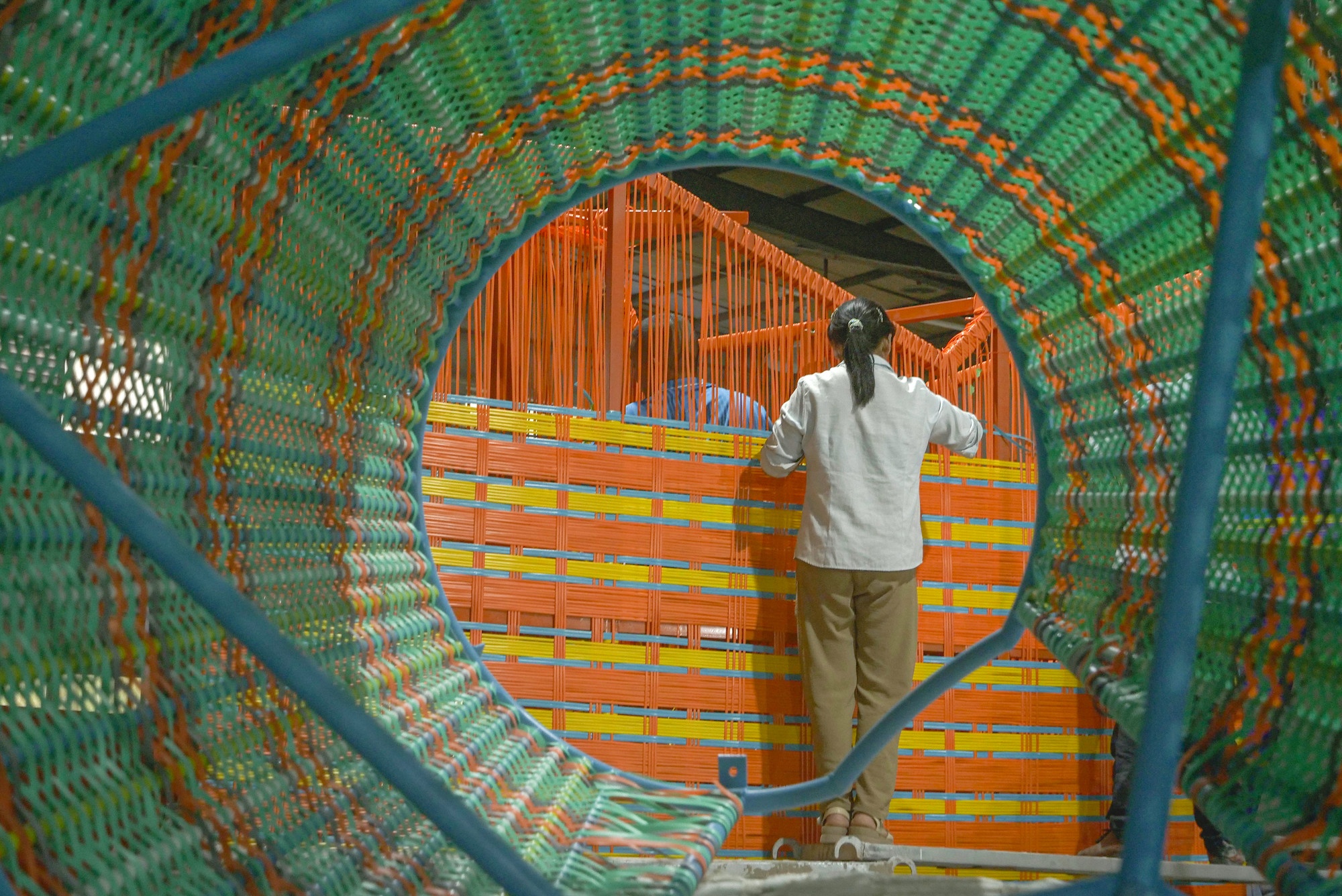
09 Weaving Texture of Different Techniques©Sunday 04
Weaving the City
Weaving the City: A Multidimensional Urban Illusion Constructed by Weaving Techniques
The special themed art installation created by Big Star Jizi Design Studio in April 2024 at the first exhibition of "Encounter-Wes Anderson" in China echoes the "Webster Aesthetics" urban image slices collected by fans in the exhibition. These images are arranged and combined in a unique way, condensing countless urban memories, and the weaving urban art installation created this time aims to expand the weaving topic to the vast public domain and stimulate people's new imagination and profound understanding of urban space.
The device covers an area of 18.5 square meters and is 7.4 meters high. Its surface has been carefully woven by hand for more than 2000 hours. The main body is composed of four mutually embedded blocks to form an open space, which creates a surreal and unique experience through the subtle narrative of "collision" and "miniature. Weaving shows the unique "connection" charm. From the physical level, the natural texture of the warp and weft interwoven, the appropriate gap and the soft or tough texture all exude a sense of intimacy. In the design material selection, plastic braided belt and elastic rope become the leading role, skillfully absorb the textile color of PITAKA, flexible use of classic warp and weft weaving, mixed metal rod and soft material weaving, winding weaving and other techniques, so that the device is not only bright and moving in color, rich and changeable in texture, but also more light and texture. This design scheme achieves a perfect balance between environmental protection and economic considerations, achieving the goal of cost reduction, efficiency increase and sustainable development. The woven material has no additional loss and no glue in the production process, and can be almost completely recycled after the exhibition. Used to make practical items such as baskets and seats. In addition, the creative process fully demonstrates the characteristics of openness and cross-border collaboration. The Daxingjizi team, the PITAKA team and many workers work together to weave together in a wide factory building. The forces of different groups are intertwined and condensed in this unique pure hand-woven architectural device.
At the spatial narrative level, it takes the representative memory places in the city such as stairs and lighthouses as the source of inspiration, and integrates elements such as PITAKA aramid looms and rotating spindles. In the "collision space" of the first heavy dimension, these inspiration elements undergo deformation and reorganization, collide and merge with each other in an irrational way in the twisted grid, and then form four spatial masses with their own characteristics. They are different in personality, color and weaving texture, and jointly build the main image of the device. In the "folding theater" of the second dimension, the installation block is ingeniously reduced to a delicate object, and a miniature landscape is constructed inside the main body. At this time, the building incarnates the role of the theater, and the internal and external relations are wonderfully reversed. The woven materials are transformed into exquisite paintings for viewing. Time and space are collapsed and staggered here, and the audience can observe the parallel world as if stepping into another layer of fictional narrative. The entire installation is open to the city interface in all directions, and people can freely enter the internal space from different directions and explore the individual blocks. The translucent texture formed by weaving cleverly blurs the boundary between the real urban space and the internal experience of the installation, allowing people to freely cross it.
In the "Weaving City" art project, Daxingjizi Design Studio has carried out various practices in weaving technology.
In terms of weaving materials and techniques, plastic woven belts and elastic ropes are used to draw on the textile colors of PITAKA to build a skin with jumping colors and light texture. According to different spatial characteristics, flexible use of classic warp and weft weaving, mixed metal rod and soft material weaving, winding weaving three techniques, bring rich texture changes and visual performance. And the woven material is environmentally friendly and economical, making no additional loss, no glue, and can be recycled after the exhibition for making baskets, seats, etc.
The weaving process focuses on the strengthening of the "connection" attribute. The details of the exhibition are carefully set up in each block to encourage the audience to touch and interact spontaneously. In the thousands of square meters factory building, Daxingjizi team, PITAKA team and more than 10 workers jointly weave for more than 2000 hours, covering an area of more than 80 square meters. The trajectories of different groups are intertwined, demonstrating the openness of creation and the possibility of cross-border collaboration.
From the weaving results, the device abstractly presents the urban texture and landscape. The main body is composed of four color forms and various blocks embedded with each other to form an open space. Through parallel narration of "collision" and "miniature", the main body weaves a double-dimensional surreal experience. For example, in the "collision space", the inspiration elements are deformed and reorganized to form a body block; in the "folding theater", the device body block is reduced to a miniature landscape, and the internal and external relations are reversed. The whole installation is open to the city interface, and the audience can explore in many ways, weaving semi-transparent texture to blur the urban space and internal experience, so that the audience can pass through the urban spiritual and material landscape, and feel the interweaving of reality and illusion.
Daxing Jizi Design Studio was established in Shenzhen, focusing on innovative space design and artistic expression, integrating multicultural elements through cross-border collaboration, creating works with both artistic appeal and functionality with sustainable materials and techniques, and actively exploring public art The deep integration of urban life is committed to injecting unique charm and vitality into the city, and promoting community cohesion and cultural heritage.







